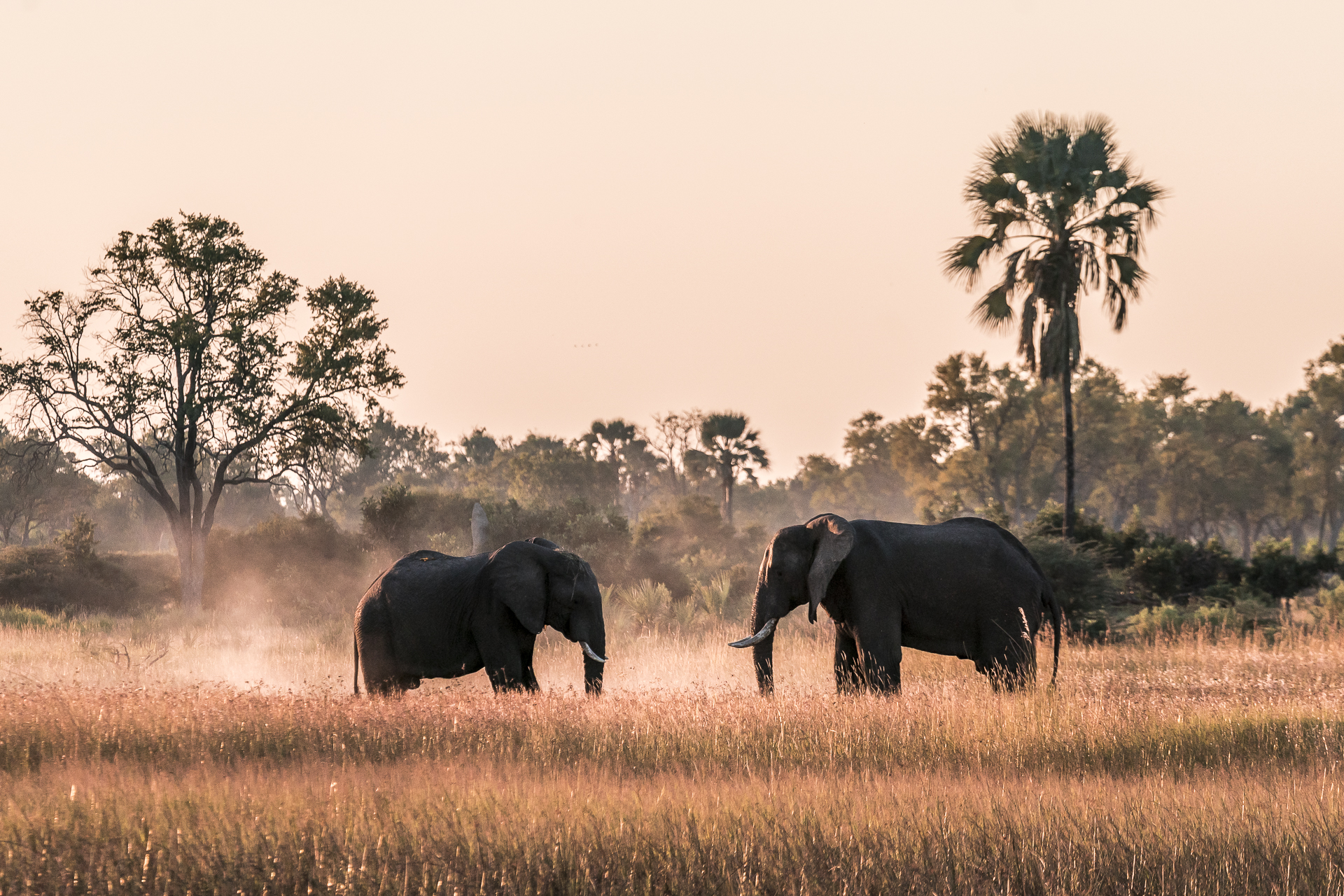
Botswana Safari Travel Tips: Chobe National Park & Okavango Delta
This post contains advertisements for my partner Swarovski Optik
3 weeks safari across Namibia, Zimbabwe, and Botswana – this year’s travel highlight was a few months ago. After a summer full of projects and a busy office routine, it’s my fault that I still haven’t had the opportunity to prepare all the stages of this journey for the blog. Now I have finally managed to rummage through the tens of hundreds of pictures of the last leg of my journey in Botswana and select my highlights from five wonderful safari days in the Chobe National Park and the Okavango Delta. In addition to a “flood of pictures”, you can also expect numerous helpful Botswana safari tips in this article.
Botswana Safari for Beginners: 5 Days Pure Nature
If you have read my Namibia posts, you know that we explored Namibia for two weeks as self-drivers with our own car. In Botswana it is also possible to travel around individually by rental car. In contrast to Namibia, however, the road conditions are much more challenging. While the Etosha National Park, for example, is criss-crossed with comfortably developed gravel roads, the Chobe National Park and Okavango Delta are dominated by sandy tracks. Driving skills and an appropriately equipped rental car are the basic prerequisites for a self-drive round trip in Botswana that is as breakdown-free as possible. In addition, there is the time factor – the sand tracks “eat” time. And so the remaining five days would never have been enough for us to visit both the Chobe National Park and the Okavango Delta with a realistic route planning. As safari newbies, it also made sense for us to go on some game drives with experienced rangers – so I can fully concentrate on the wonderful nature around me and benefit from the experience of the local guides.
For this reason, we decided to carry out the last stage of our journey «guided». After two days in Victoria Falls, we were picked up at Kasane Airport from Chobe Elephant Camp and taken to the camp, which is about 60 kilometers away. There we spent two days with all-inclusive services (game drives and full board). Afterwards we went from Kasane Airport with a small Cessna of Mack Air to the Sanctuary Stanley’s Camp in the middle of the Okavango Delta (private concession adjacent to the Moremi Game Reserve). Here, too, we had booked everything “all-inclusive” for the last three days of our trip.
2 day safari along the Chobe River
Organized safari trips in Botswana are not cheap per se – the range ranges from expensive, even pricier and exclusive. On the other hand, the communicated accommodation price usually includes guided game drives, food, and drinks (beer, cider, and gin and tonic are also included). Most camps host only a handful of guests at a time. This is also the case with the Chobe Elephant Camp on the border with Namibia. The camp, operated by Bush Ways Safari, consists of a main building and 12 mud houses grouped around it, which can accommodate a maximum of 24 guests. You will eat together in the main house and for the game drives you will be distributed among the guides. During our visit at the beginning of May, the camp was not fully booked. Next to us were two Germans, two Englishmen and six Americans. If you do not book a private safari, you will be assigned a vehicle and a guide on site for the duration of your stay. In this respect, it’s like mountain guides and SAC huts – sometimes you’re more lucky and sometimes less lucky with the group allocation. At the Chobe Elephant Camp we were super happy with our guide Isaac and our stalking group consisting of a young German couple who had already been to Victoria Falls in the same hotel as us, and a young English couple, whom we had already met at the Hakusembe River Lodge in Namibia.
The stays in the lodges are usually “controlled” in such a way that the guests arrive in the afternoon and, after a short “refreshment”, can start directly with the first evening game drive.
This has some animal highlights in store for us, from curious giraffes to cheeky waterbucks to bull elephants measuring strength. Chobe National Park is known for its huge herds of elephants and buffalo. And even though we only touch a part of the more than 10,000 km2 national park in these two days, we can record some great elephant encounters.
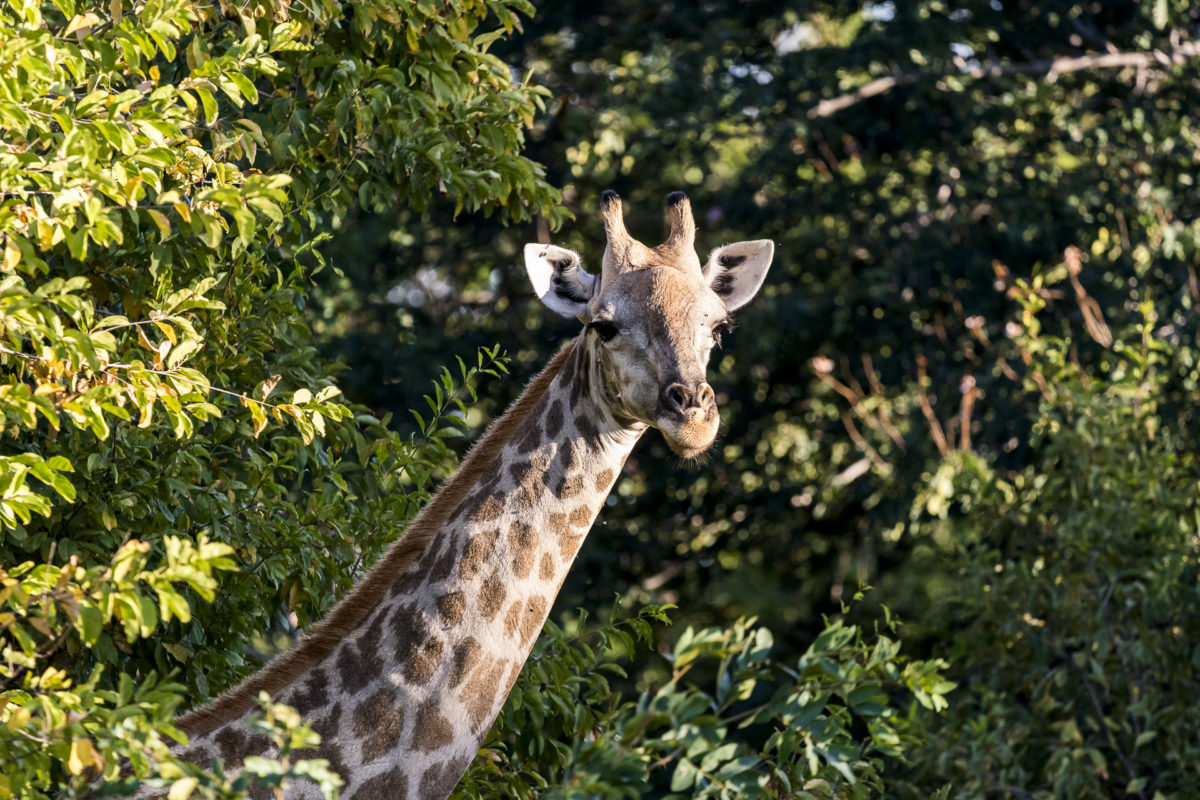
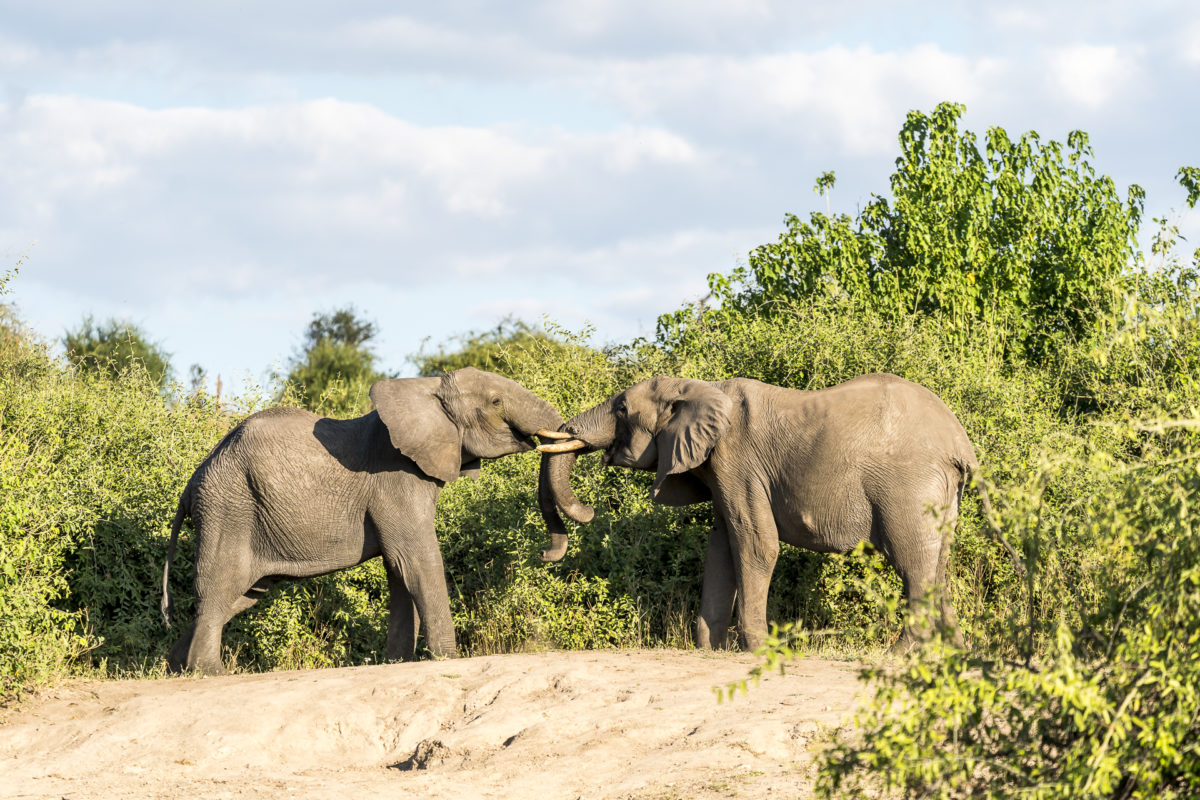
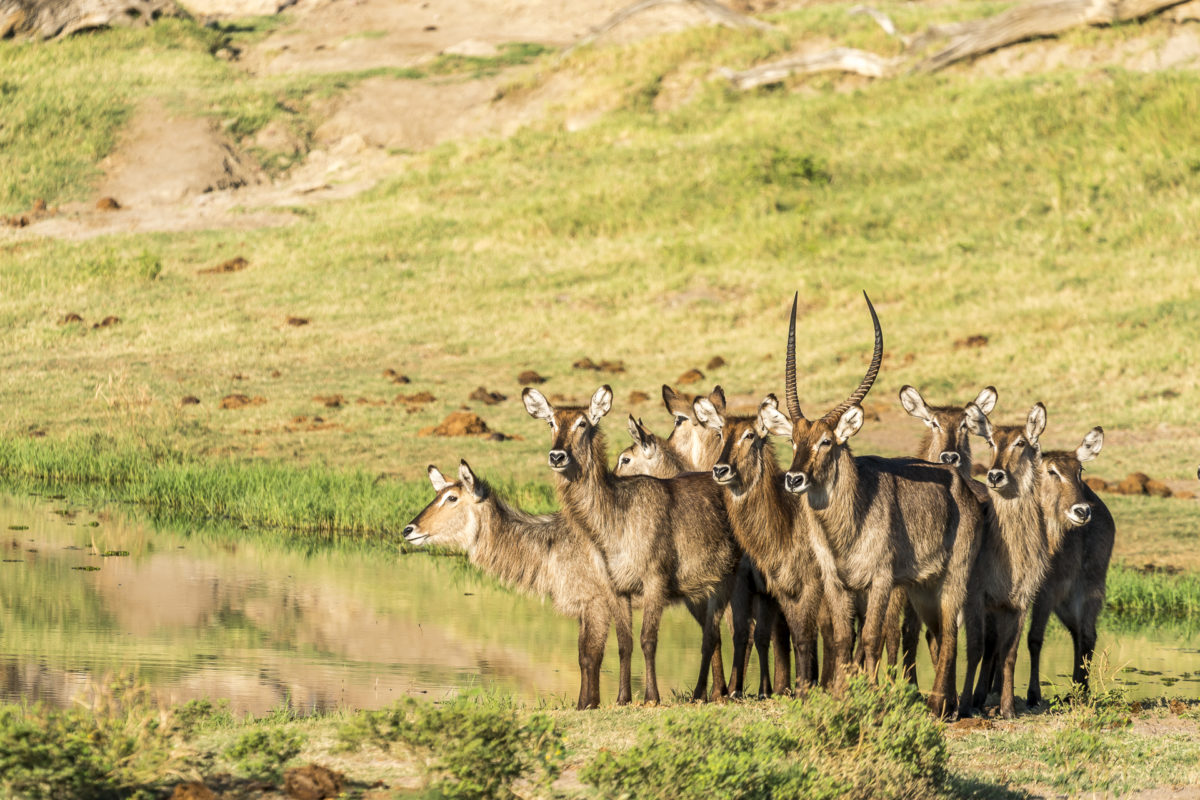
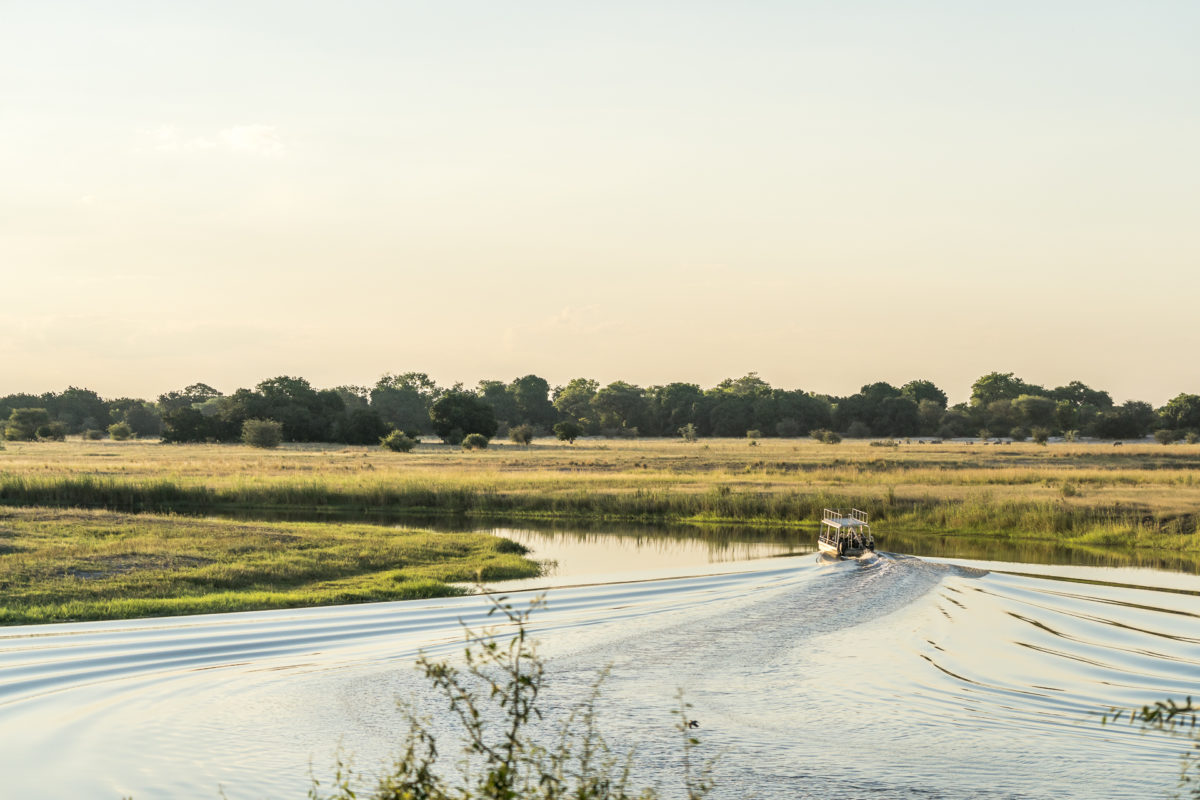
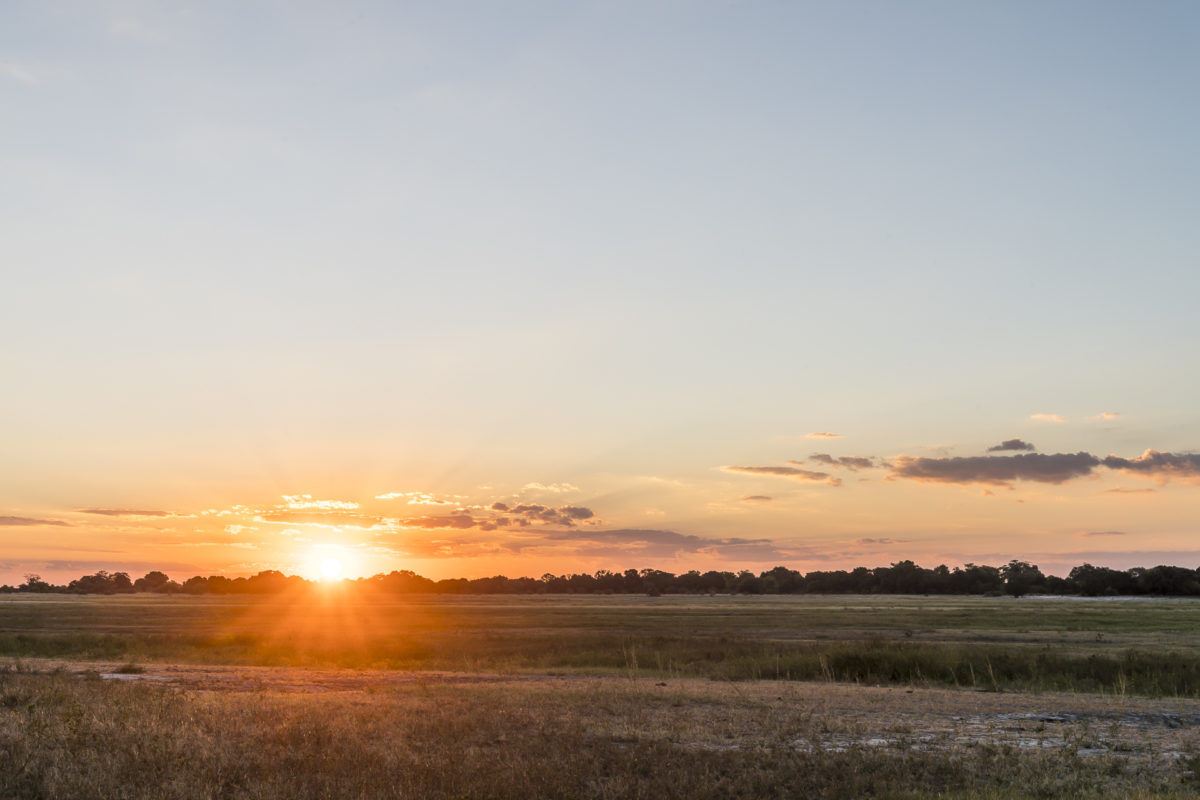
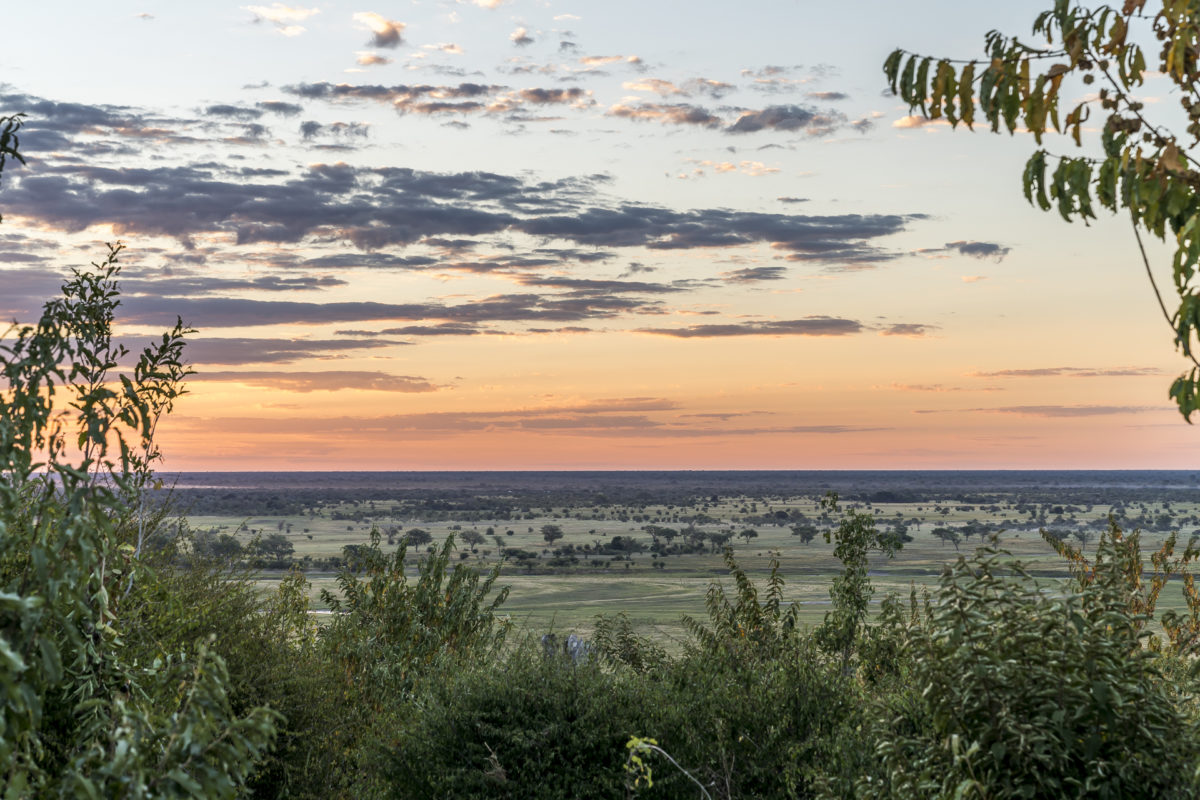
The following day, a full-day game drive along the Chobe Flood Plains to Kasane awaited us. In contrast to Namibia, where I had to focus my attention primarily on the road, here I can fully focus on nature. In this respect, my CL Companion binoculars from Swarvoski Optik including mounted smartphone adapter are always at hand. So the boyfriend and I don’t argue about who is allowed to look through the telephoto zoom.
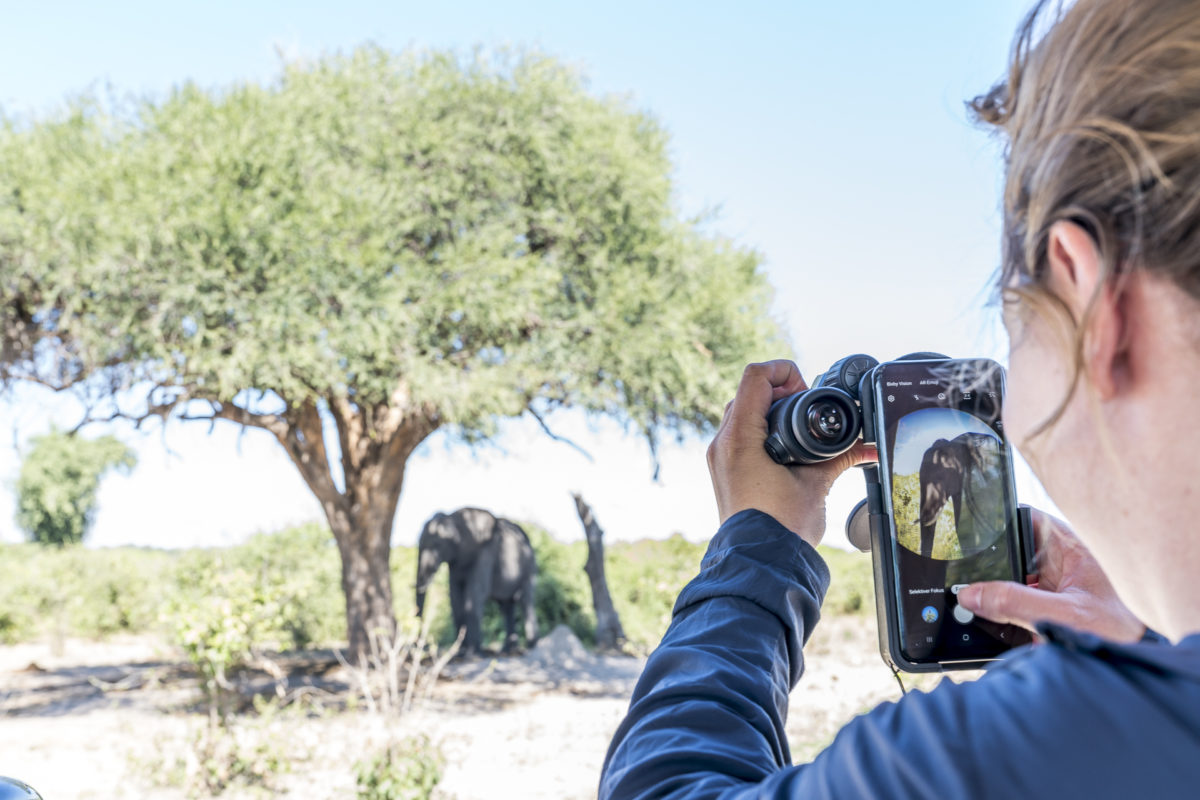
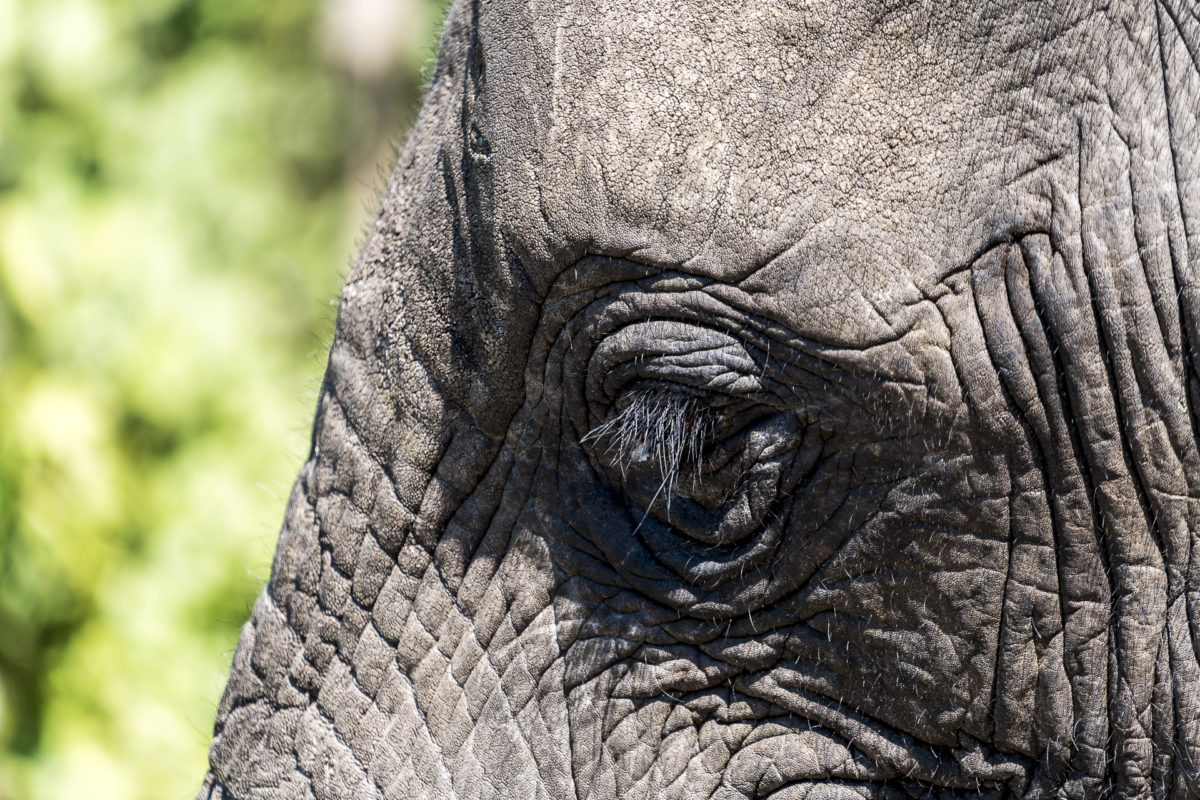
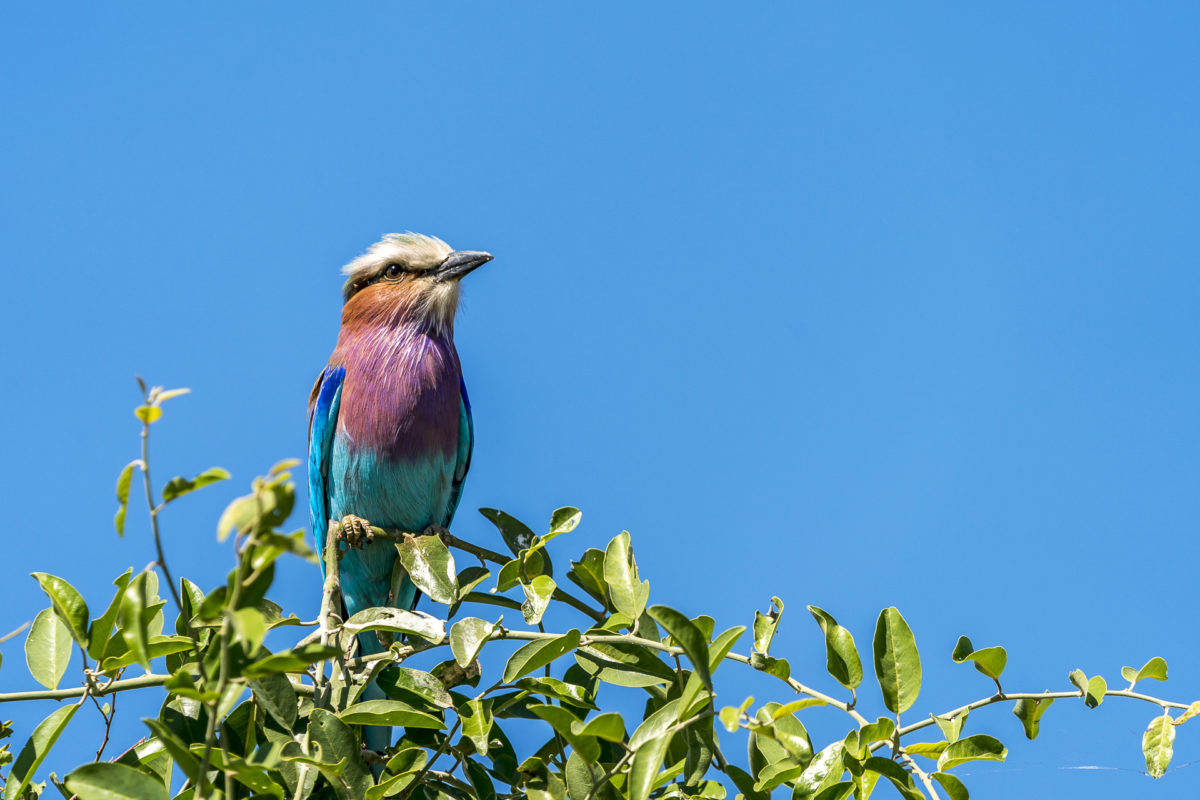
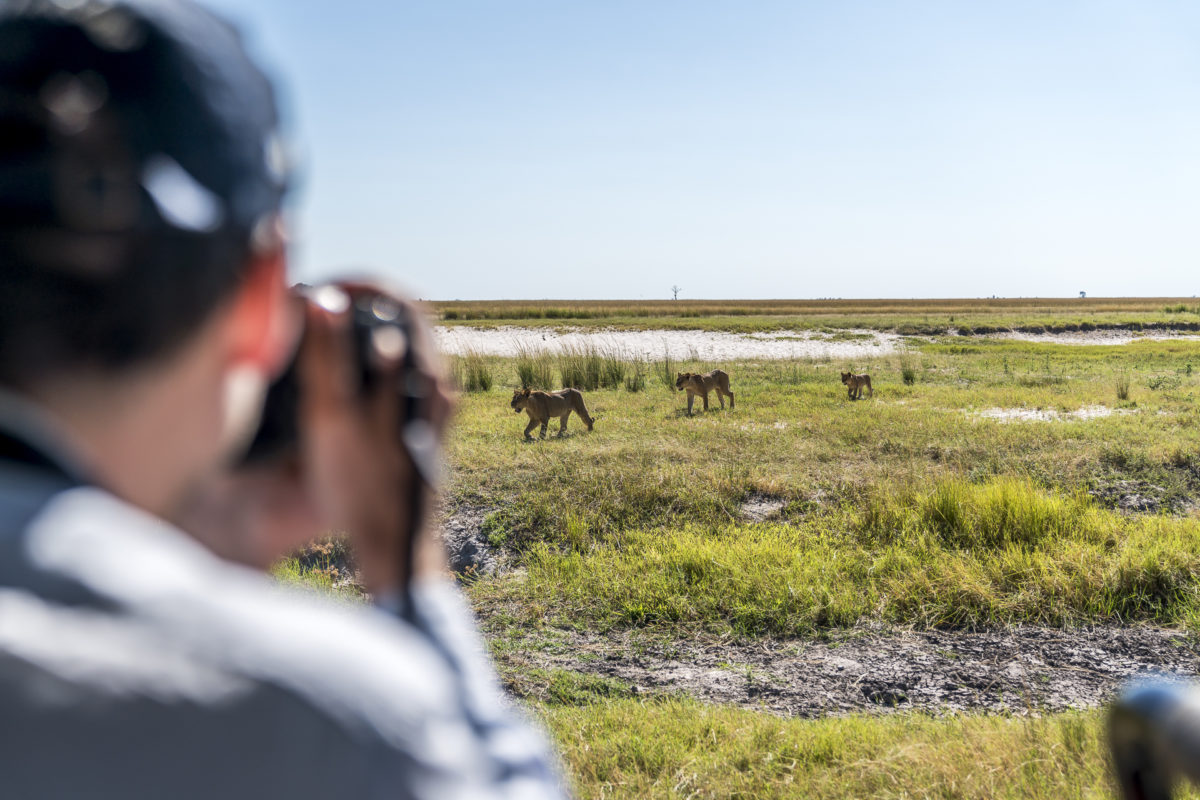
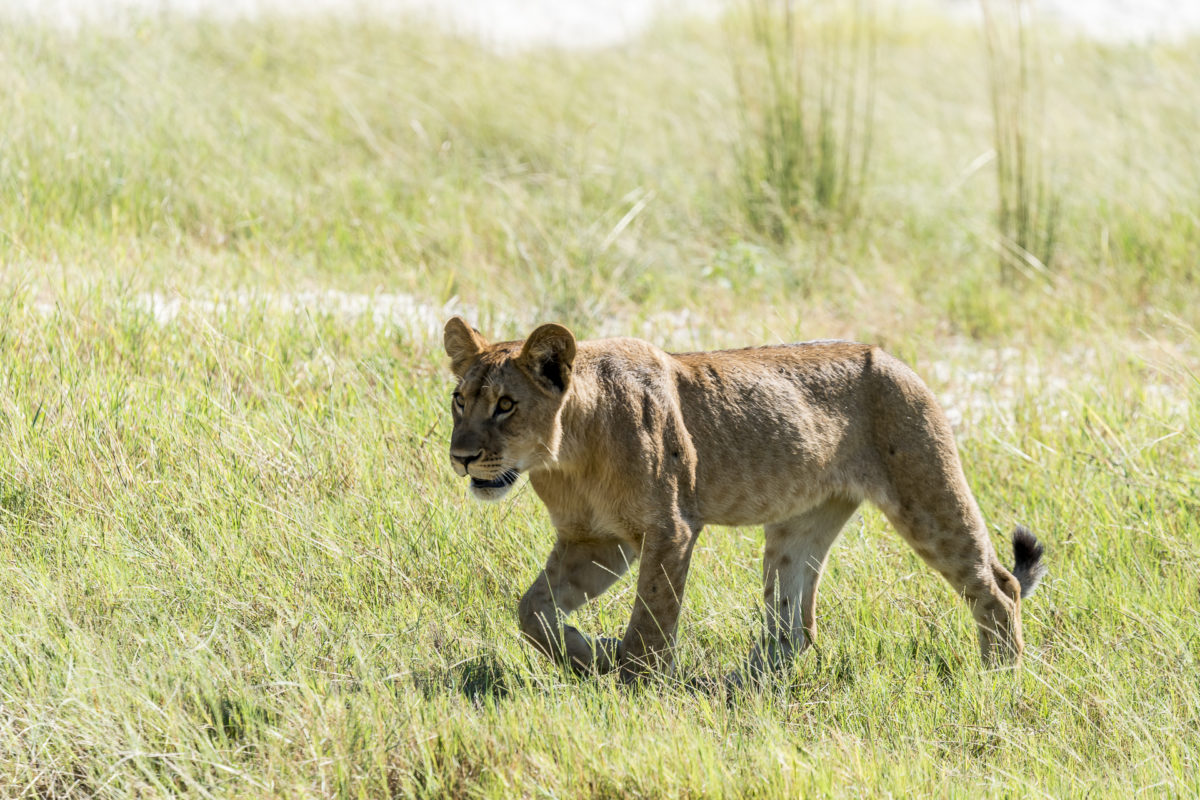
In the afternoon, we change perspective and chug up the Chobe River by boat.
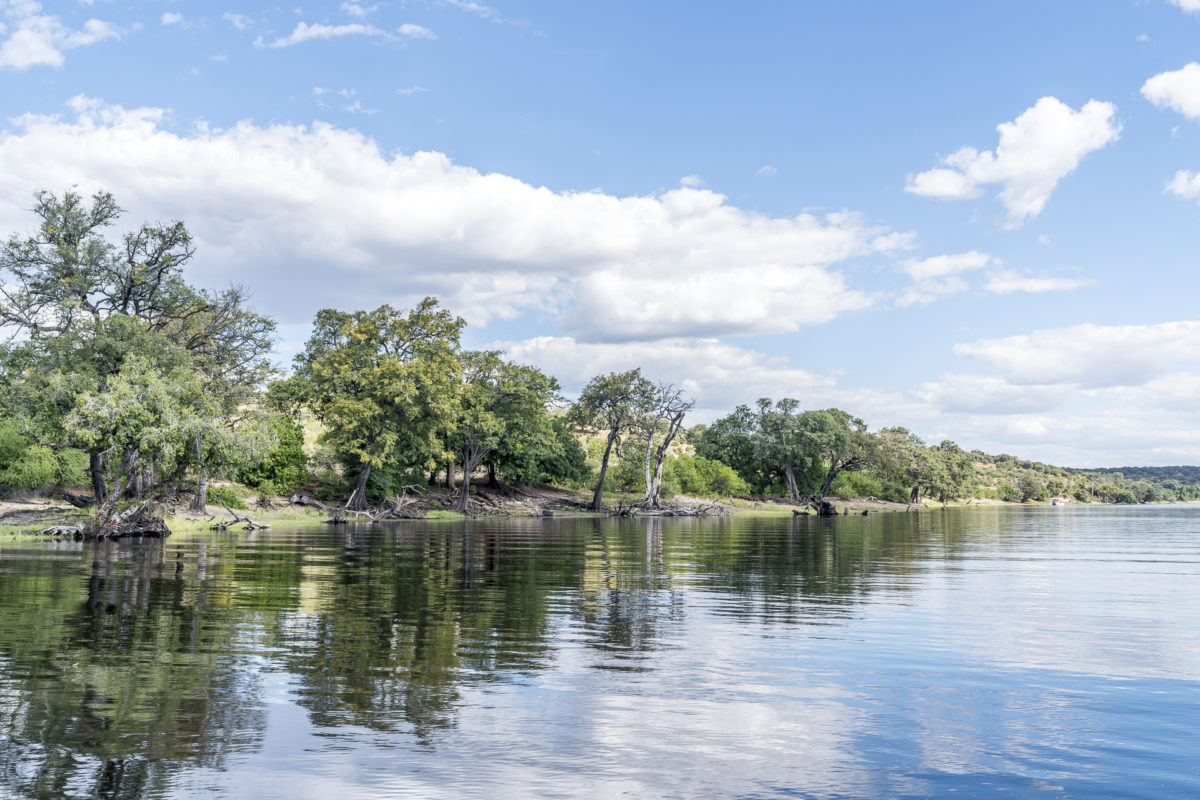
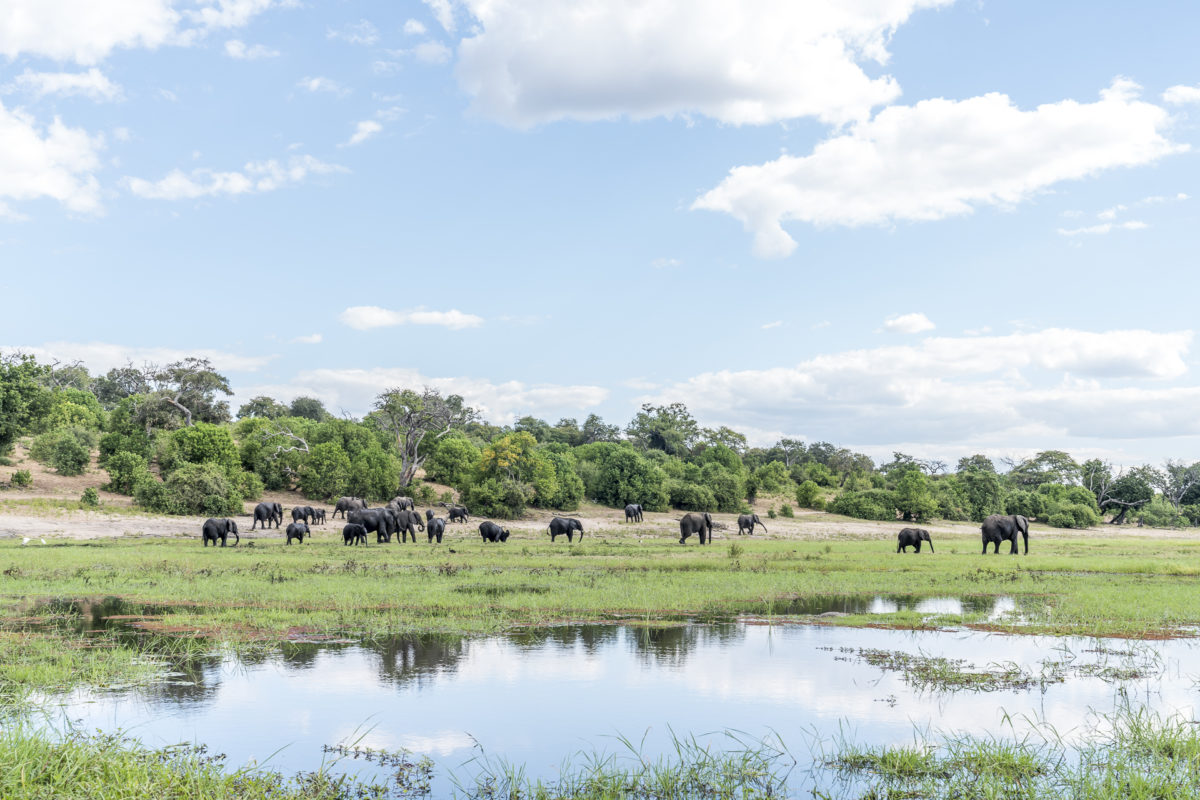
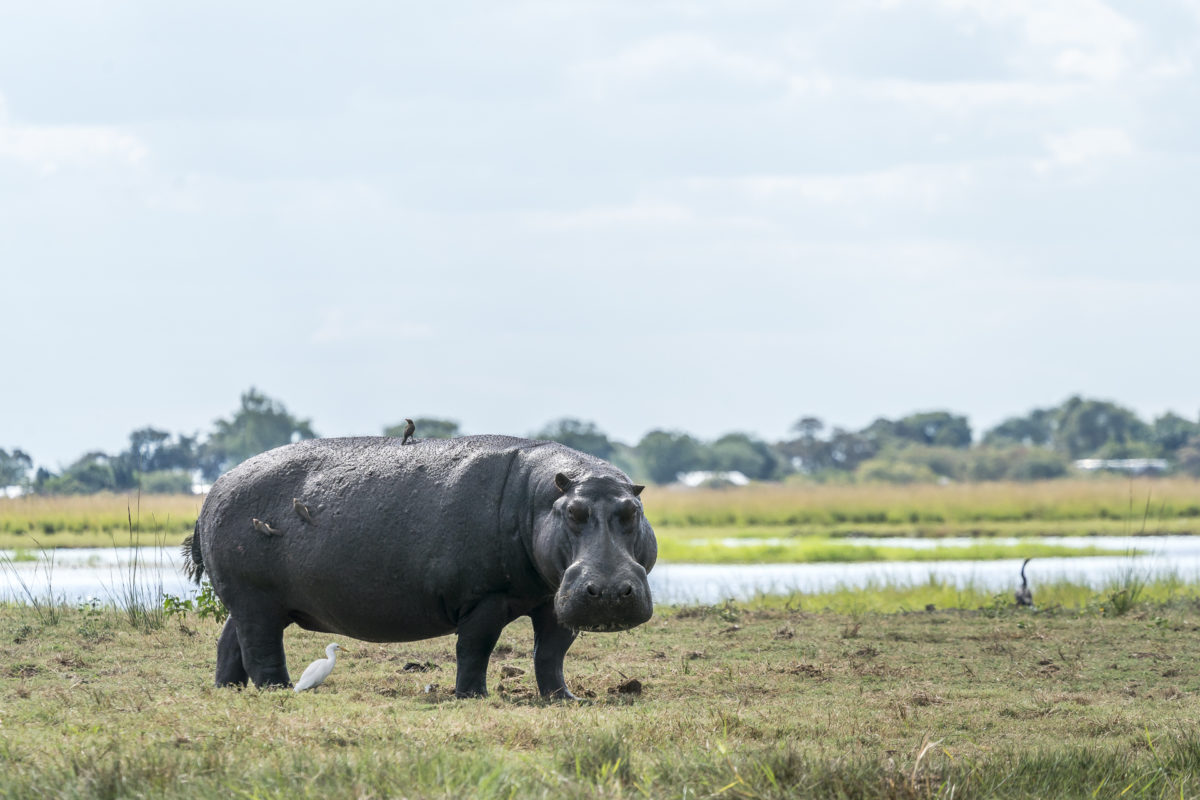
On the last day, we will enjoy a private safari. Our onward flight to the Okavango Delta is scheduled in such a way that there is enough time to combine the transfer to Kasane Airport with another game drive through the Chobe Flood Plains. A good decision: thanks to the radio-networked guides, we not only spot hyenas in action this morning, but also a full-fed, sleeping pride of lions.
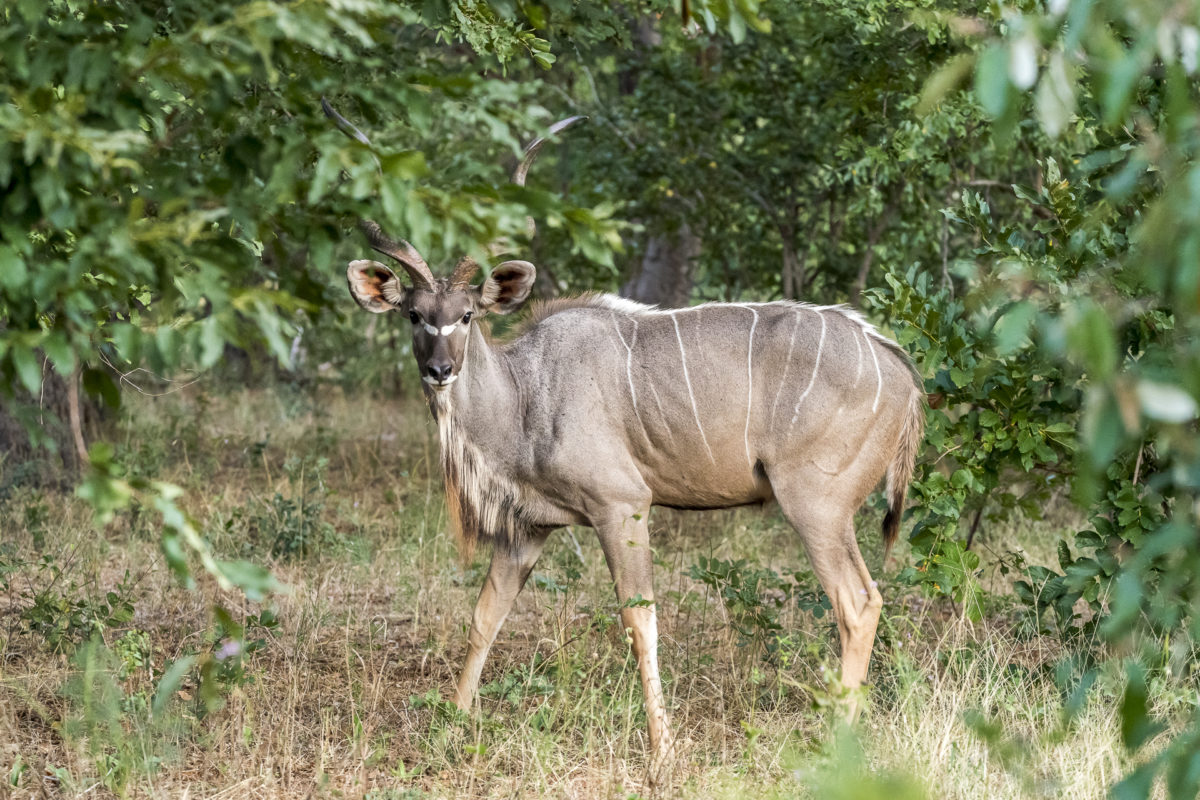
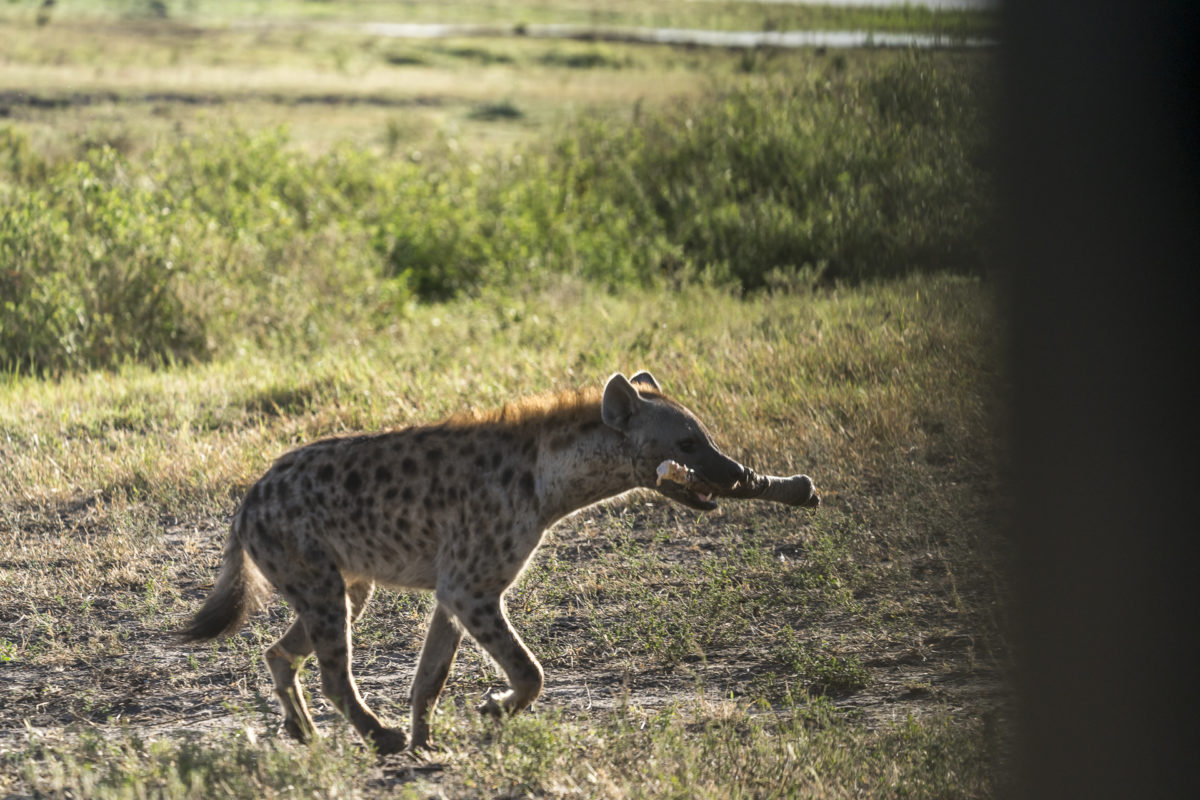
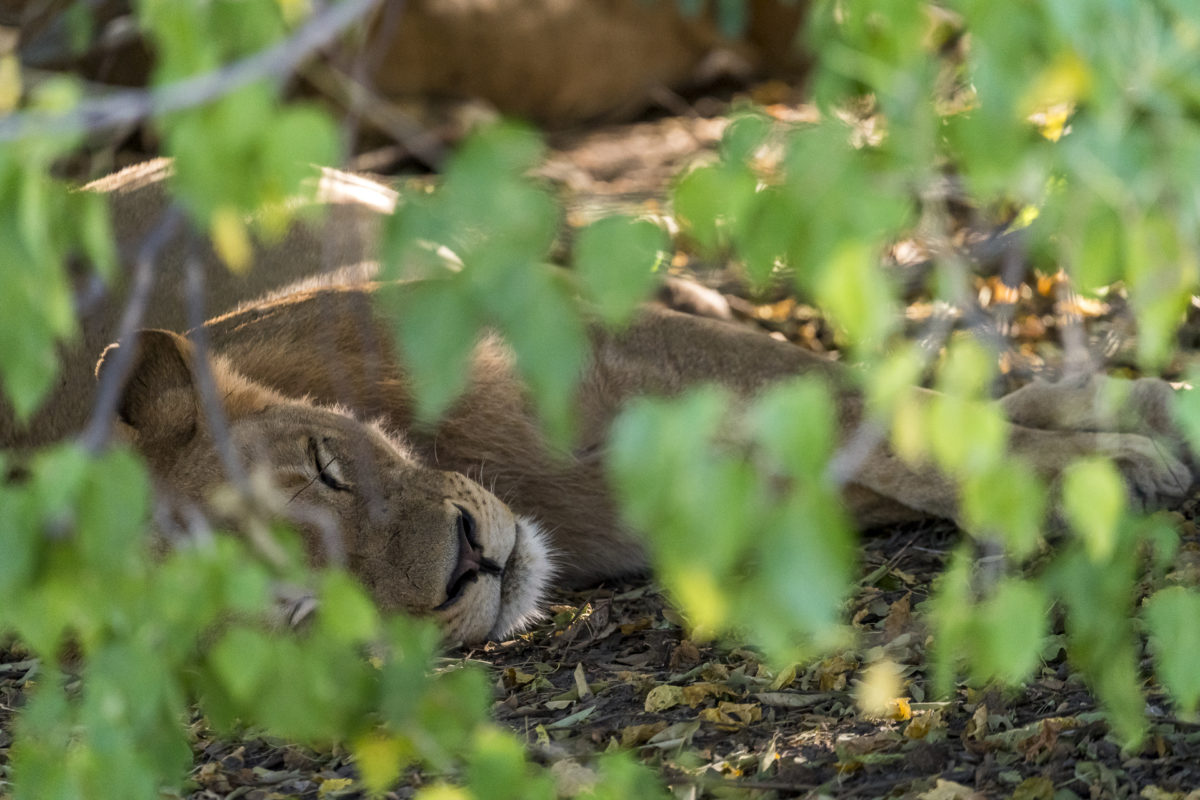
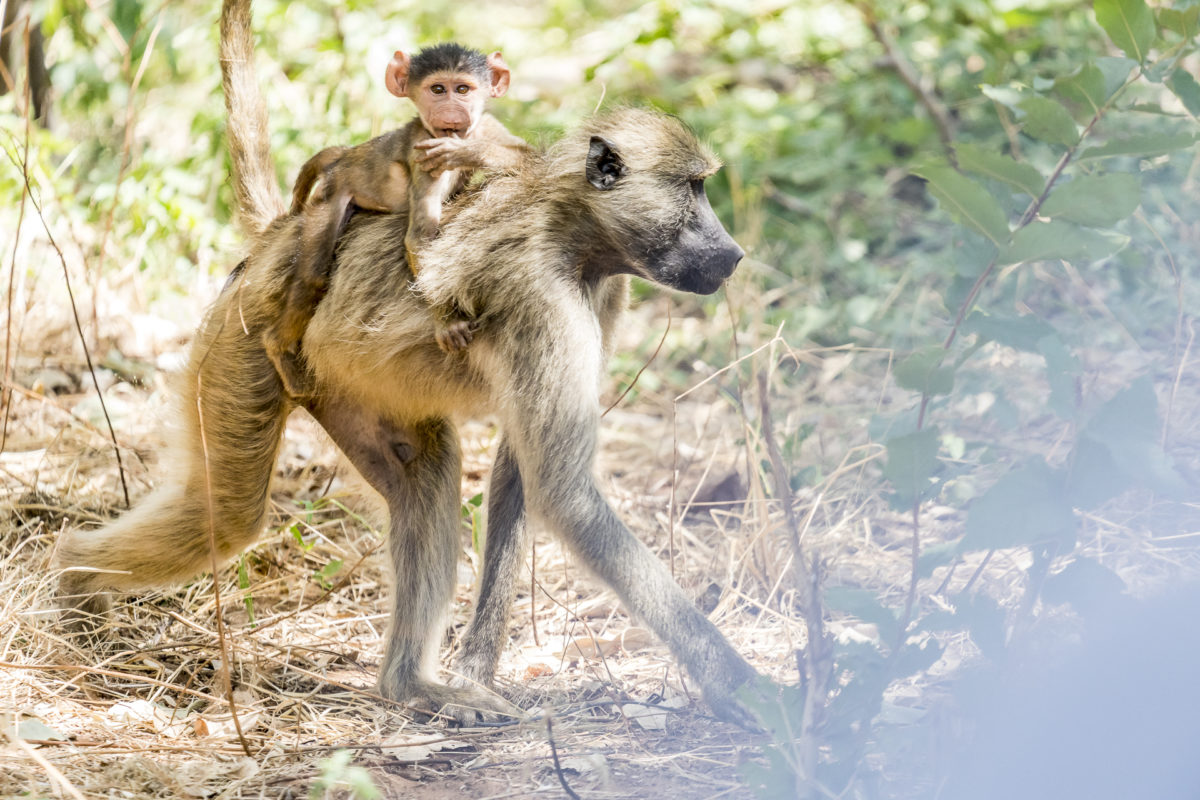
From Chobe National Park to the Okavango Delta
Afterwards, we continue with a small Cessna towards the Okavango Delta. The Okavango Delta is one of the absolute highlights in Southern Africa. So we deliberately saved it as the crowning glory of our three-week trip.
The advantage of a fly-in safari is not only the “saved” time but also the fact that you get to see the impressive expanses of the Okavango Delta from a bird’s-eye view. Since the camps are widely scattered from each other, almost every camp has its airstrip. As a passenger, you only find out the exact flight times the day before – this is because the airline tries to distribute the guests as efficiently as possible on the flights. The camp crew takes care of the organization/communication between the airline and the guest.
During our flight, two camps will be served. Eight of the ten passengers have the same destination as us. Unfortunately, the Okavango Delta dries up at the beginning of May. Bushfires are also smoldering in large areas. The air around our camp is also streaked with clouds of smoke. At first, it’s an oppressive feeling. While some of these fires occur naturally – e.g. from lightning strikes – in many places human inattention (or sometimes wantonness) is also involved. However, the bushfires do not only have negative aspects. They help to renew the grasslands in the African savannahs – the regrowing vegetation is usually stronger and more lush (background information can be found here: ecological significance of bushfires)
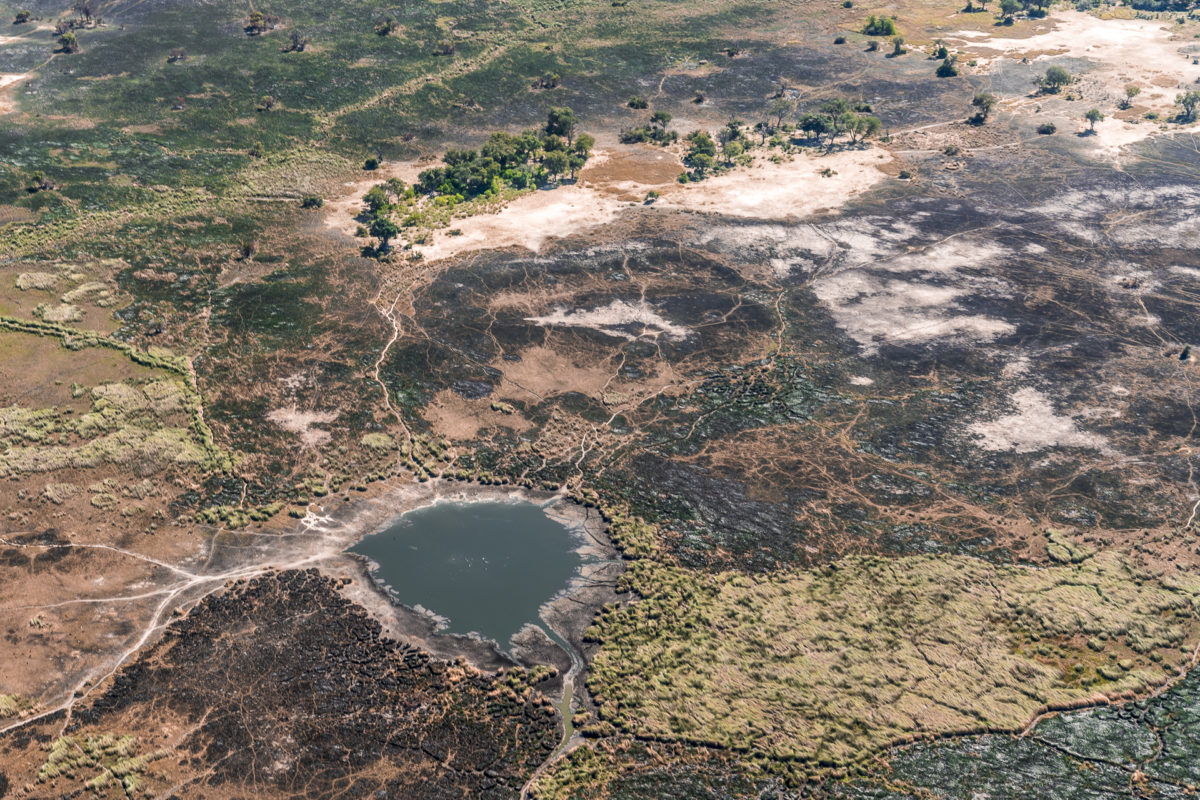
Stalking around Sanctuary Stanley’s Camp in the Okavango Delta
On site we will be welcomed by our guide. Demo, as he introduces himself to us, is responsible for us during our three days on site. Sanctuary Stanley’s Camp has a total of eight luxurious tents, accommodating 16 guests. We share the car and our guide here in the Okavango Delta with an English family of three – compared to the Chobe Elephant Camp, this combination is less satisfying for us. While this marks the end of our three-week safari, it is the prelude for the English family. At first glance, they meet all the common clichés of the well-to-do safari tourist; equipped with khaki-colored clothing, wide-brimmed hat and a booklet to tick all the animal species spotted. Only the binoculars – as an essential safari gadget – were unfortunately forgotten. But the English lady is too proud to accept the offer to peek through mine. They are also not happy about the fact that in a safari camp you are usually “car-by-car” at the table. After a first dinner together, we are seated at a separate table at the request of the English family. Well.
After the great atmosphere at Chobe Elephant Camp, this is a double-edged safari end for us. The camp and the wildlife around it are great! But the mix of guests and the ambience appealed to us more at Chobe Elephant Camp. But as already written, this part is difficult to influence – unless you book a private safari from the beginning.
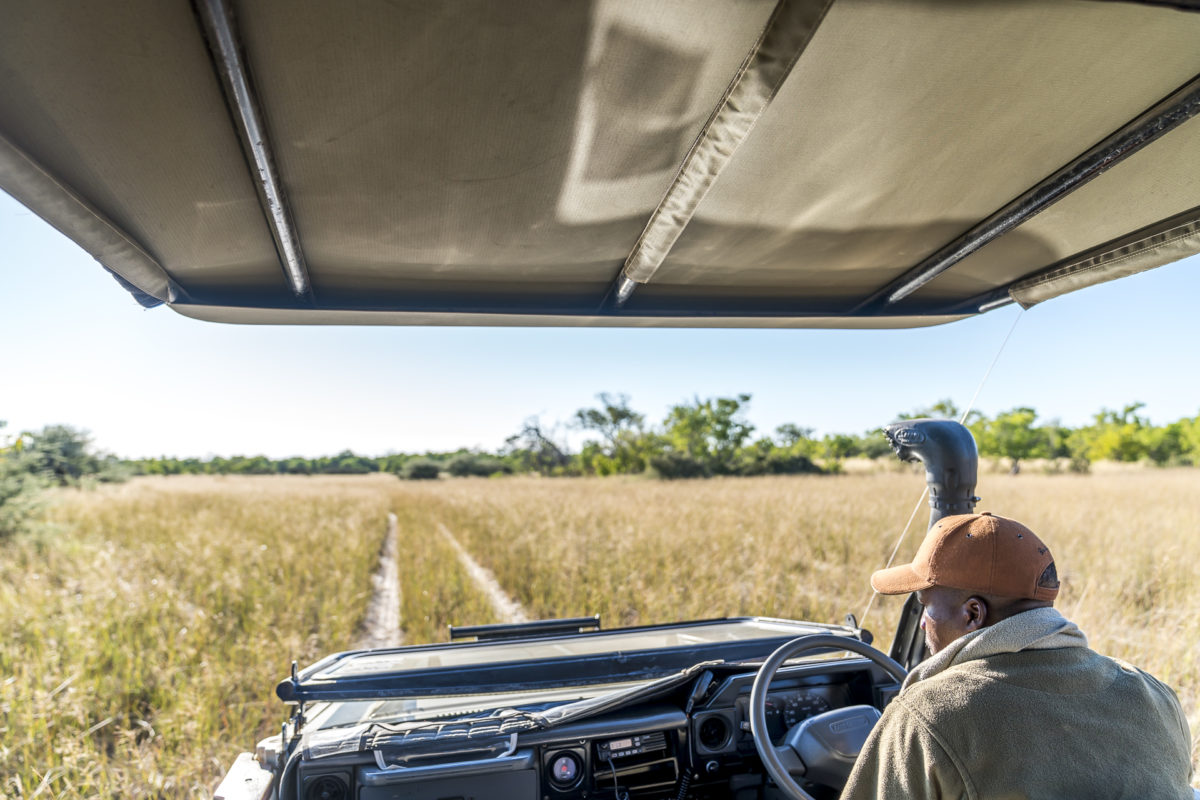
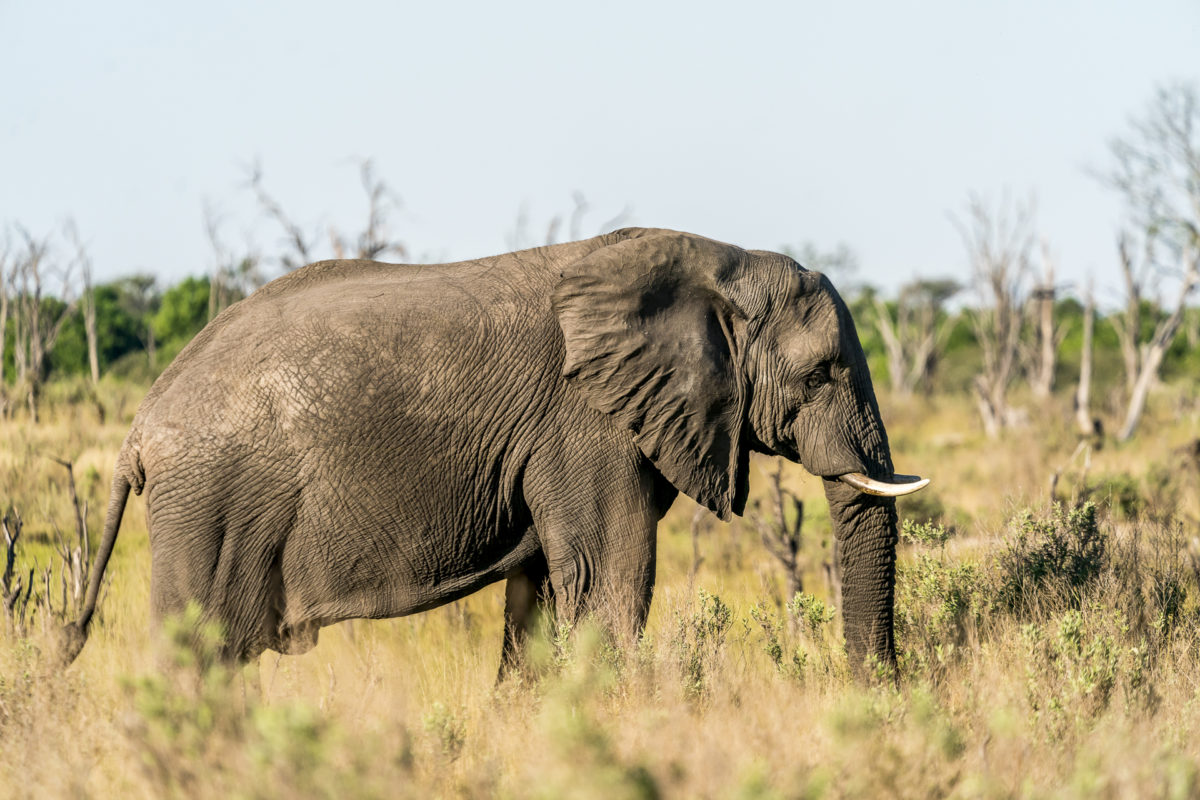
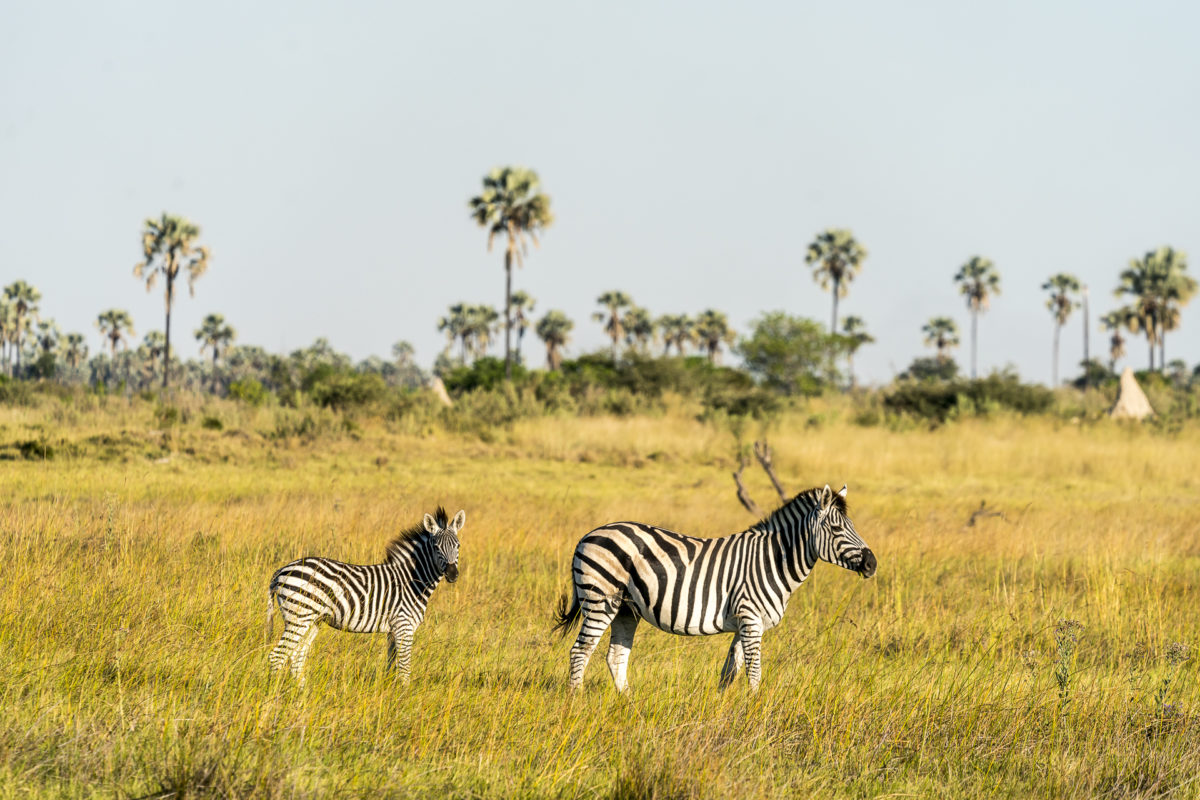
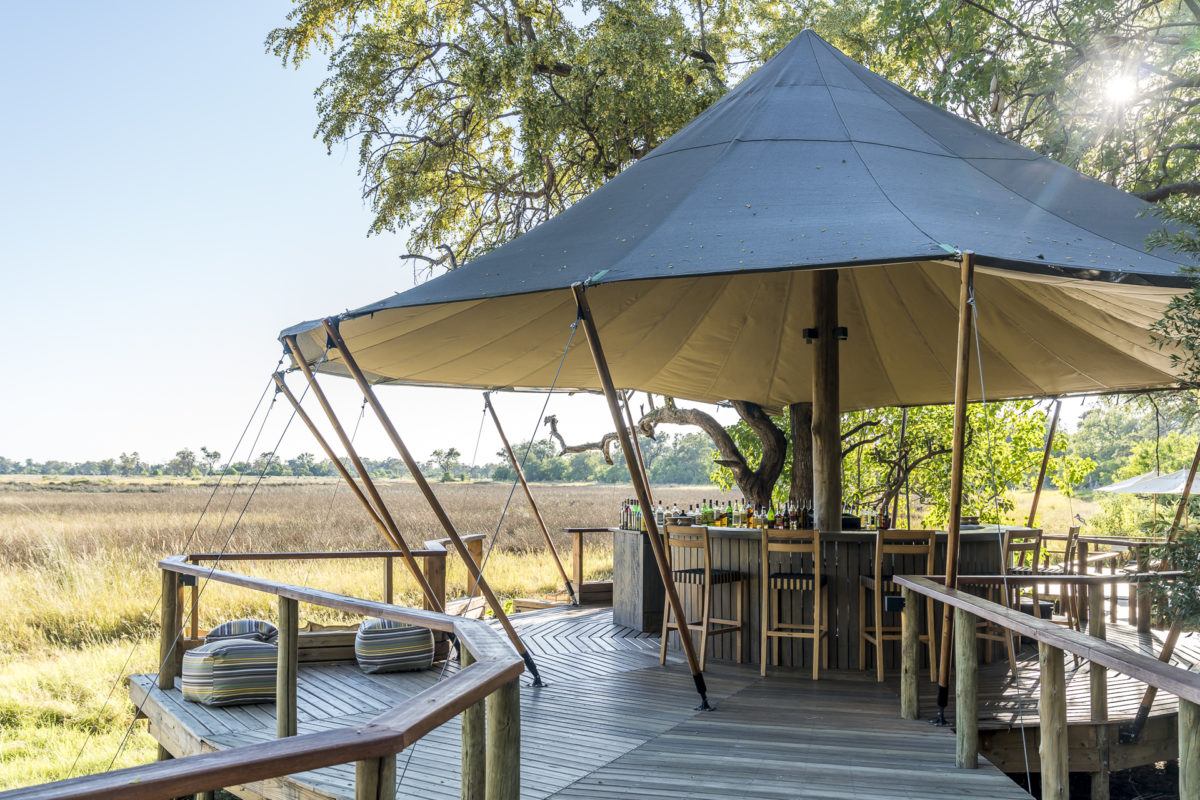
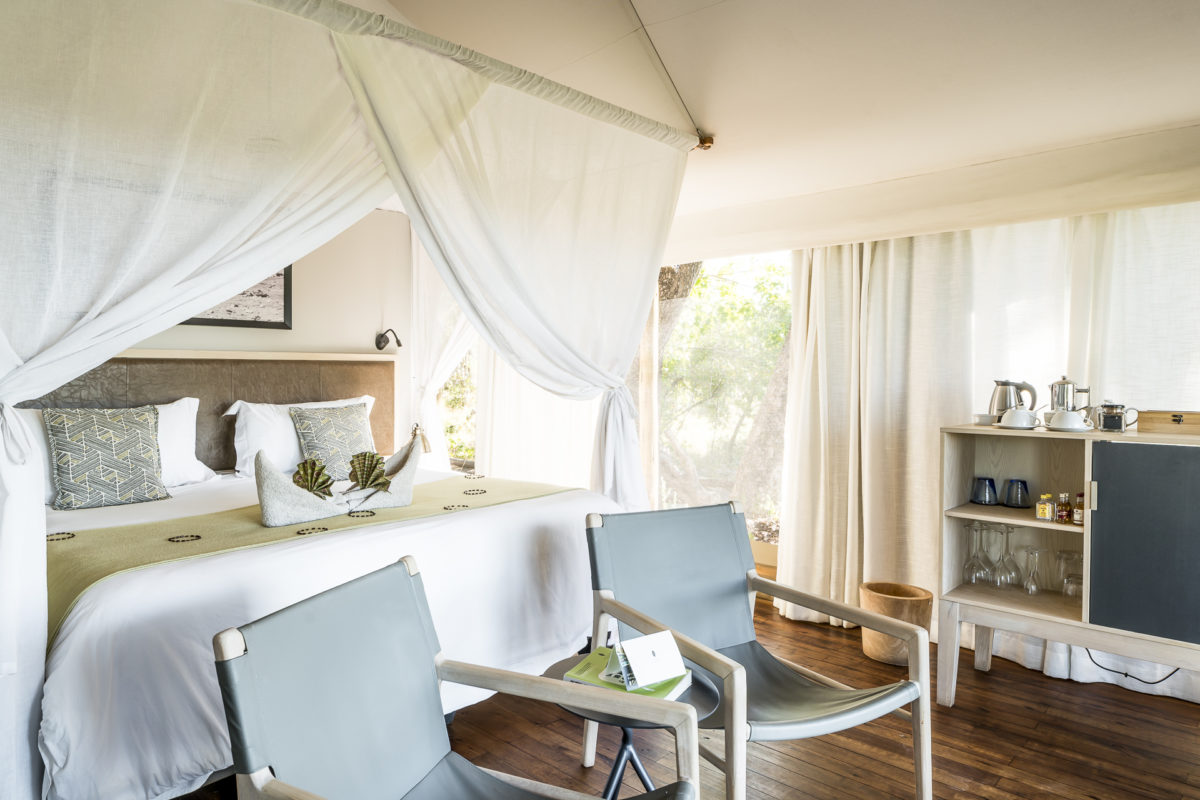
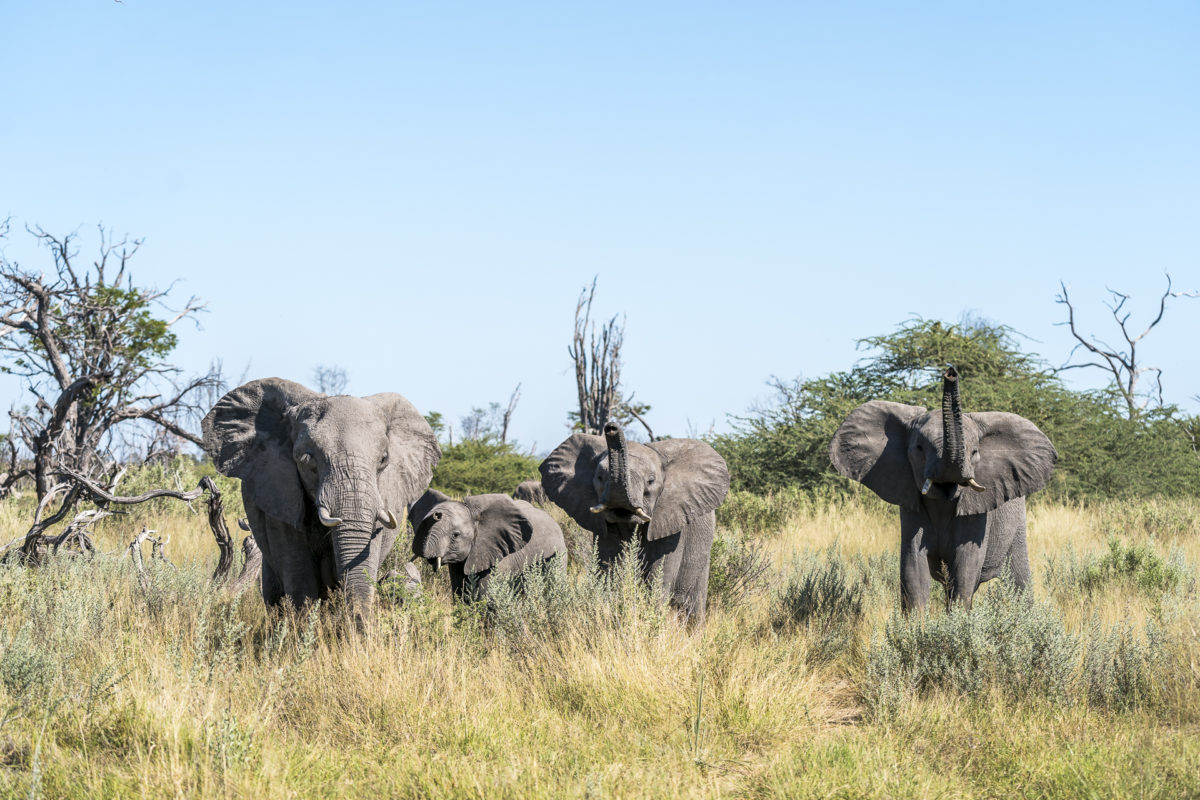
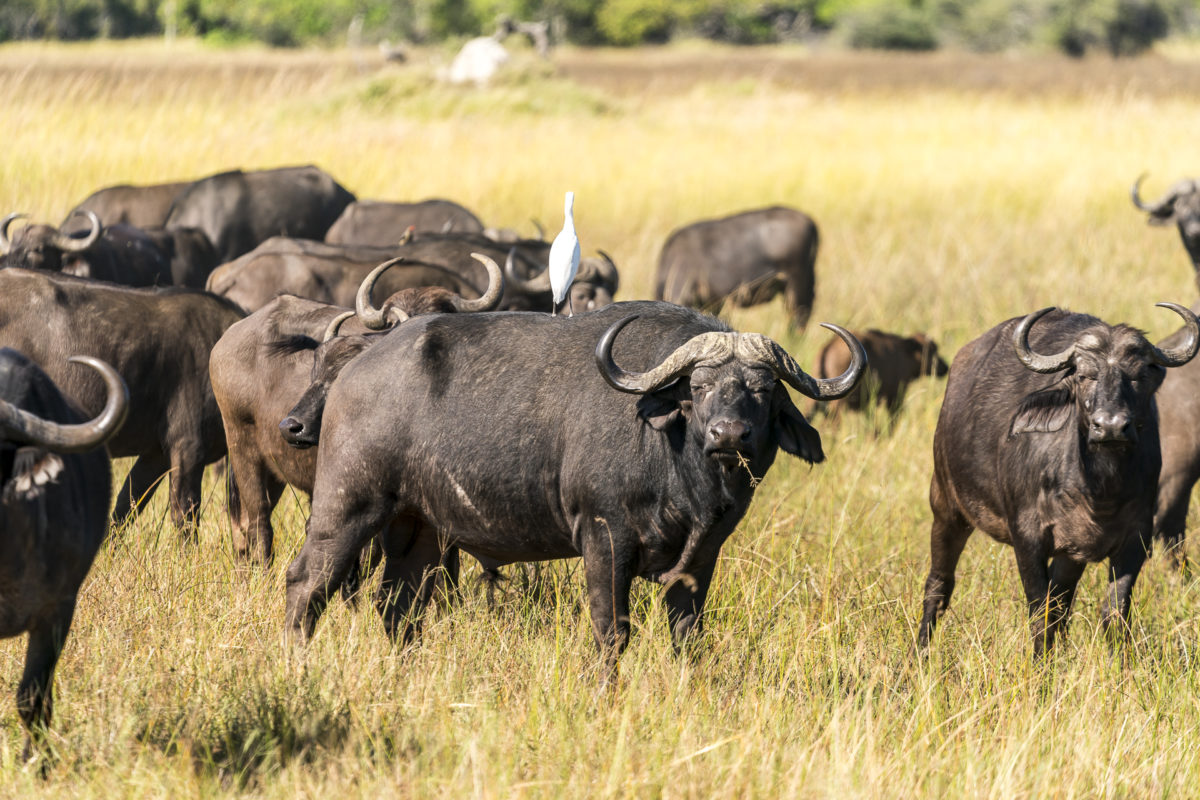
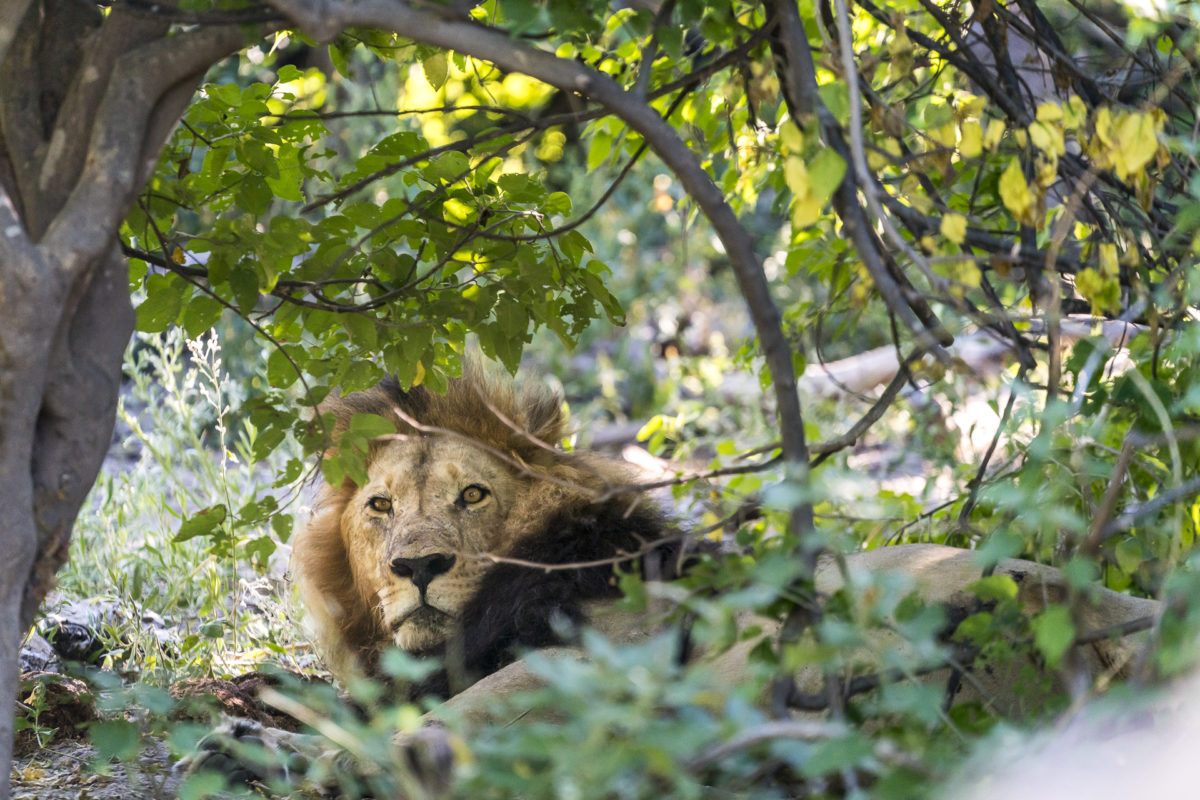
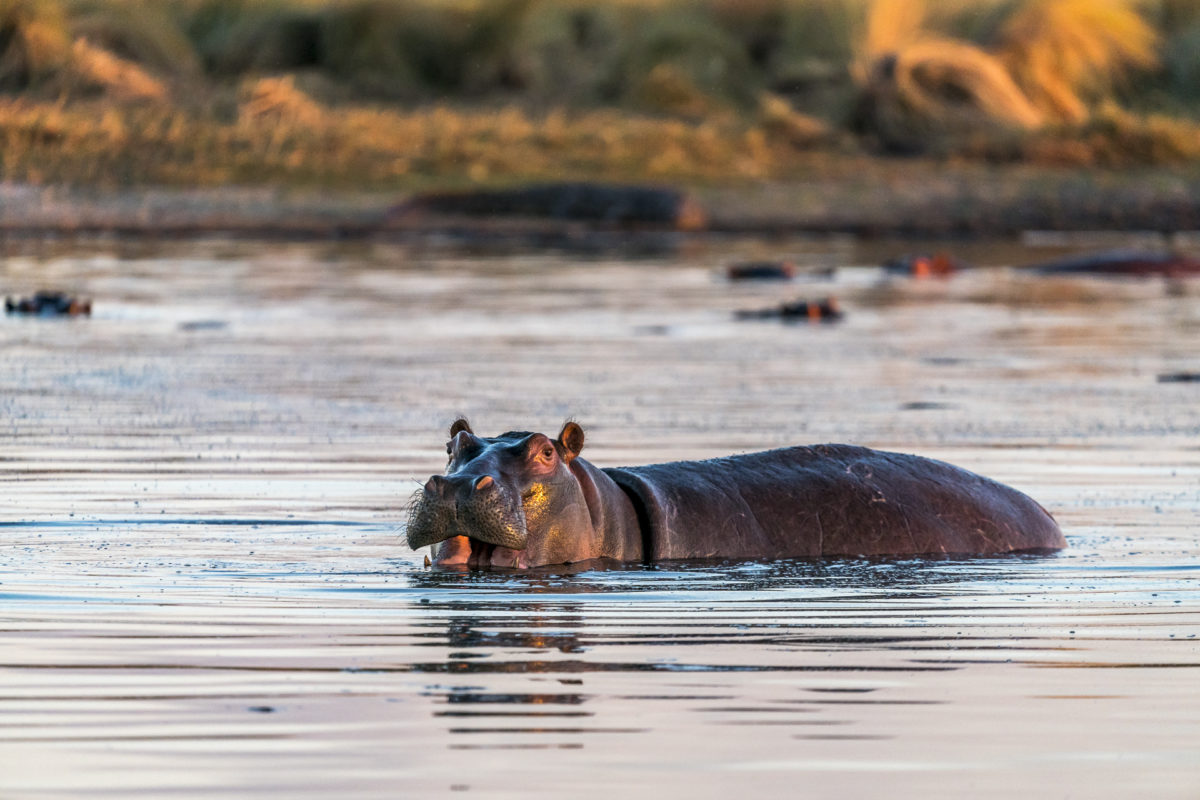
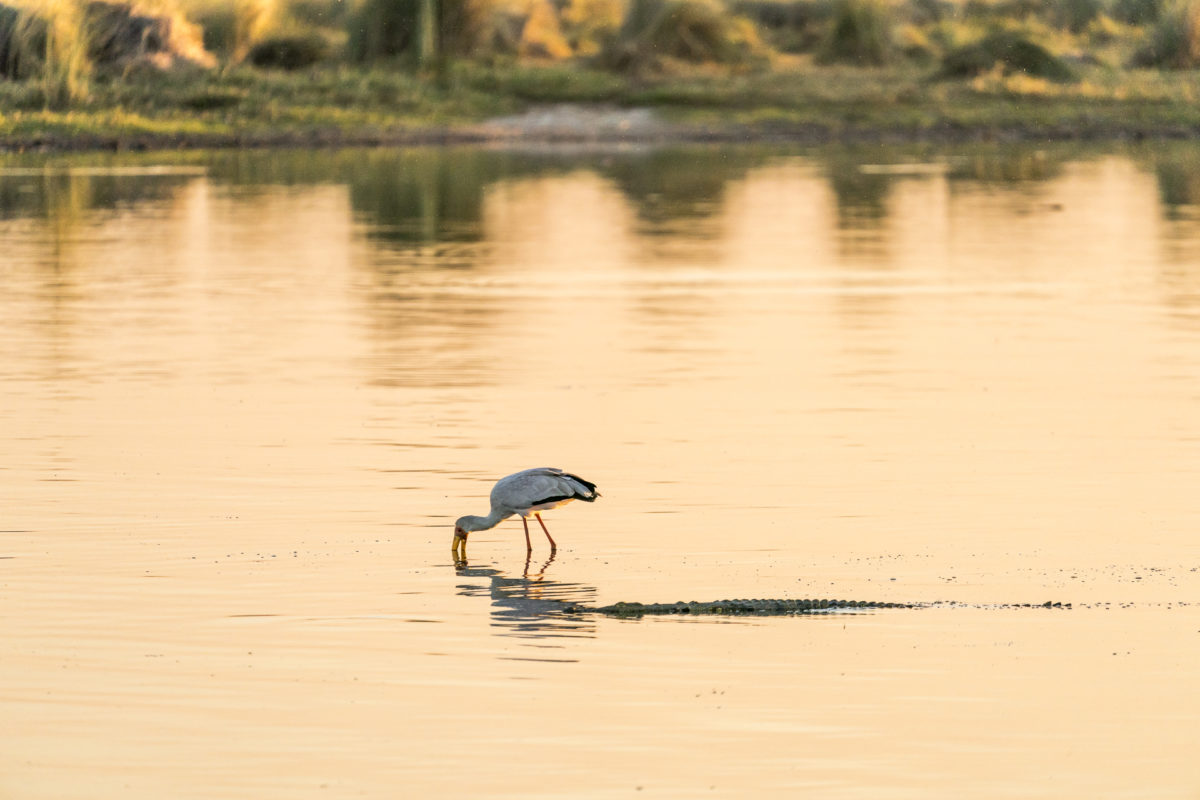
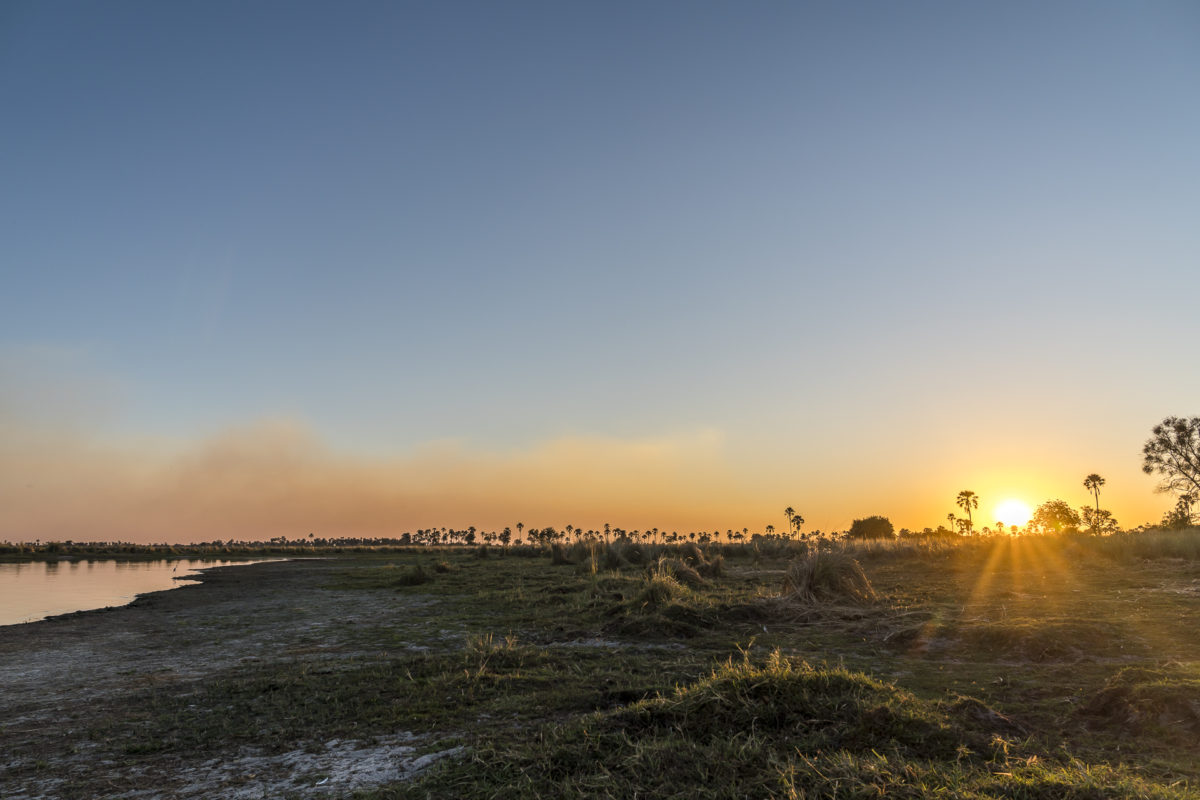
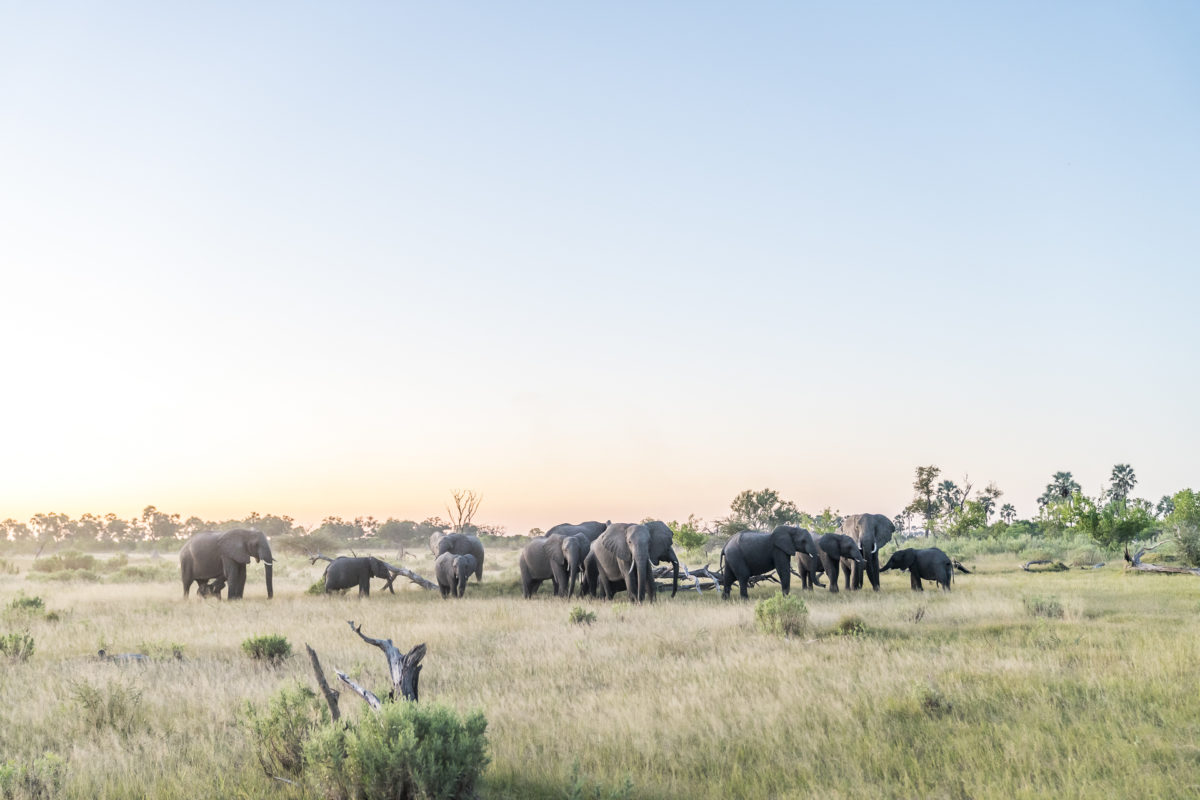
There is one highlight at the end – or actually even three highlights. On the one hand, it is the variety of birds that we get in front of our lenses here. On the other hand, it is the encounter with a cheeky young lion, which we observe for almost an hour during his (unsuccessful) attempts to hunt a warthog family. And thirdly, it’s the morning together with Doug and Sandi Groves and their two orphan elephants “Jabu” and “Morula”. The two scientists offer guided walks with Jabu and Morula and pass on a lot of exciting facts and interesting facts about the elephants in southern Africa. This activity is not part of the standard inclusions. Due to a misunderstanding between the agencies involved in the booking process, we were spontaneously given the opportunity to participate in this program item and, after initial skepticism, were very enthusiastic about the way Doug and Sandi deal with the elephants and pass on their knowledge. A worthwhile addition to our three-day trip to the Okavango Delta – especially because no mokoro tours were possible due to the drought and the grass was too high – and therefore too dangerous – for walking safaris.
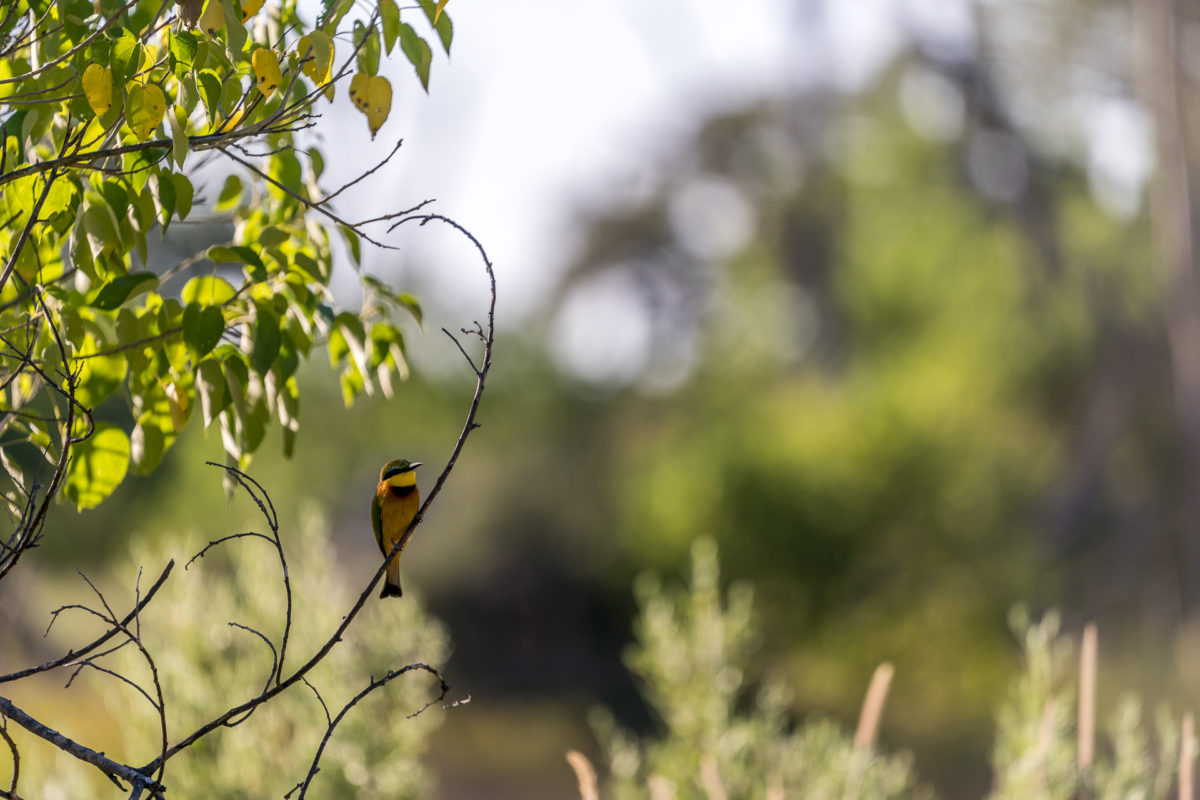
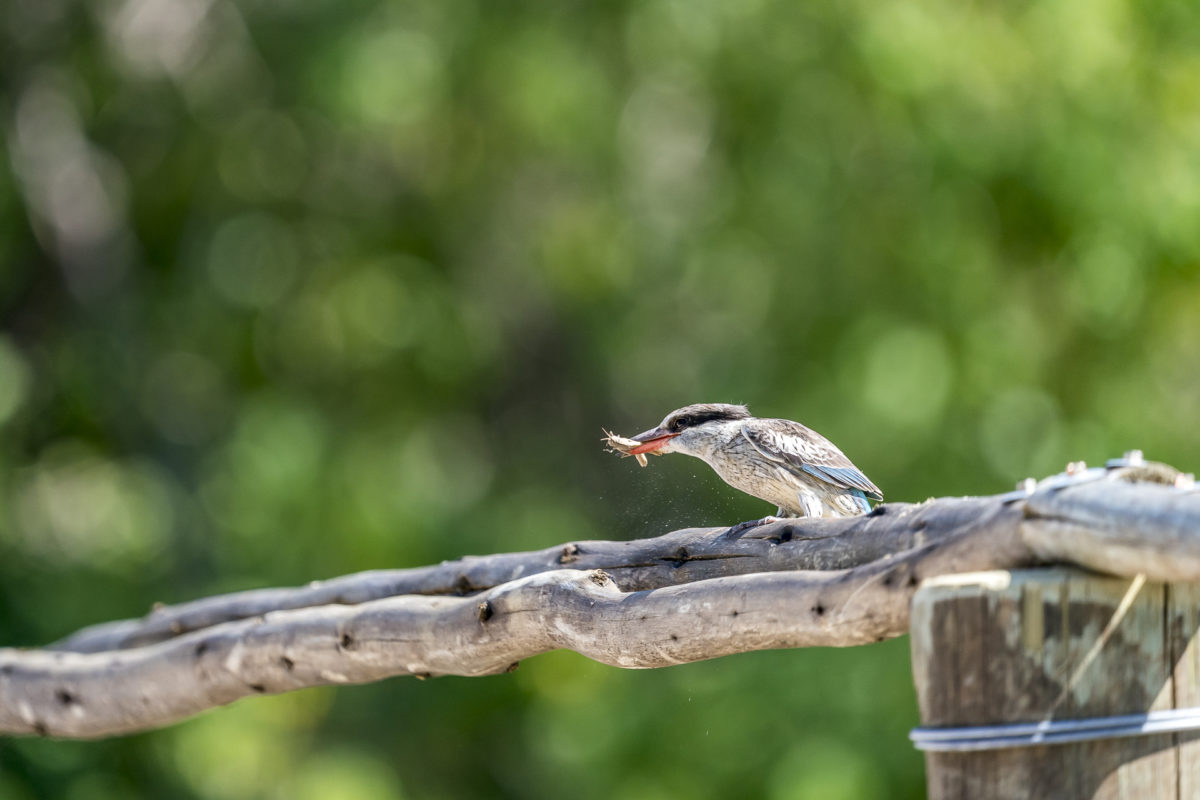
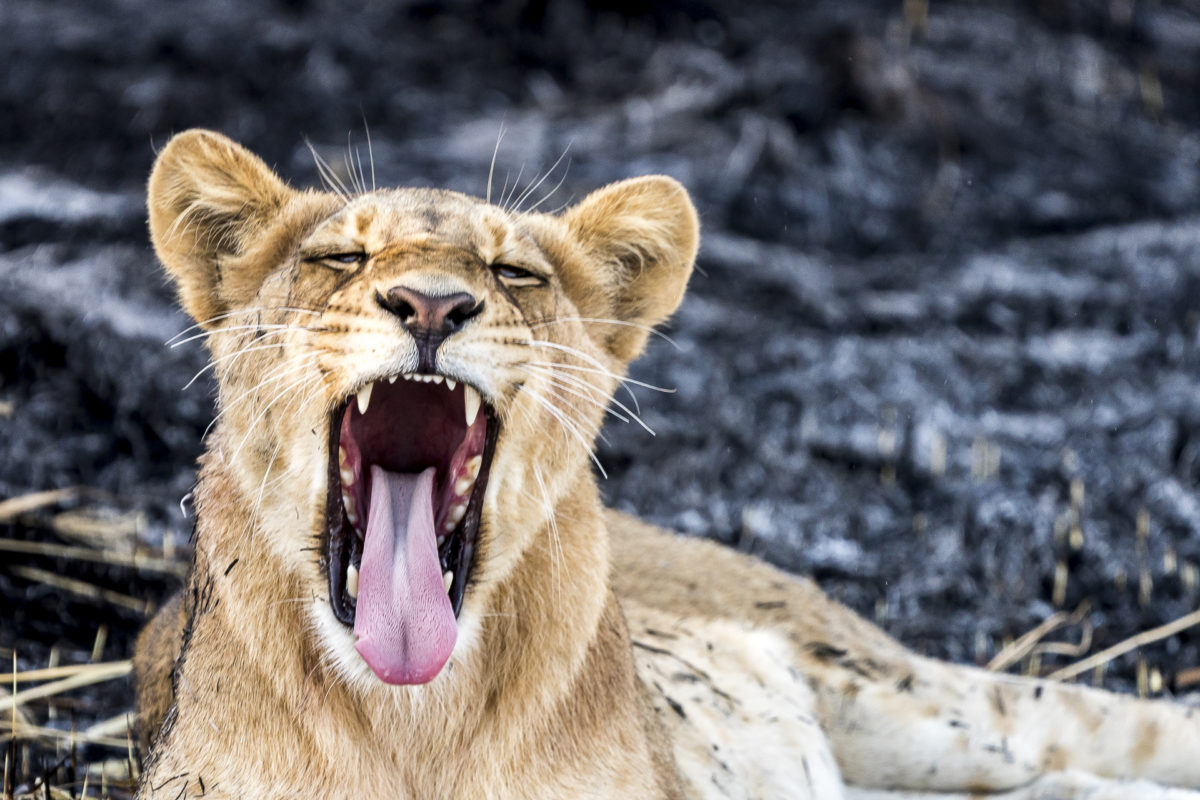
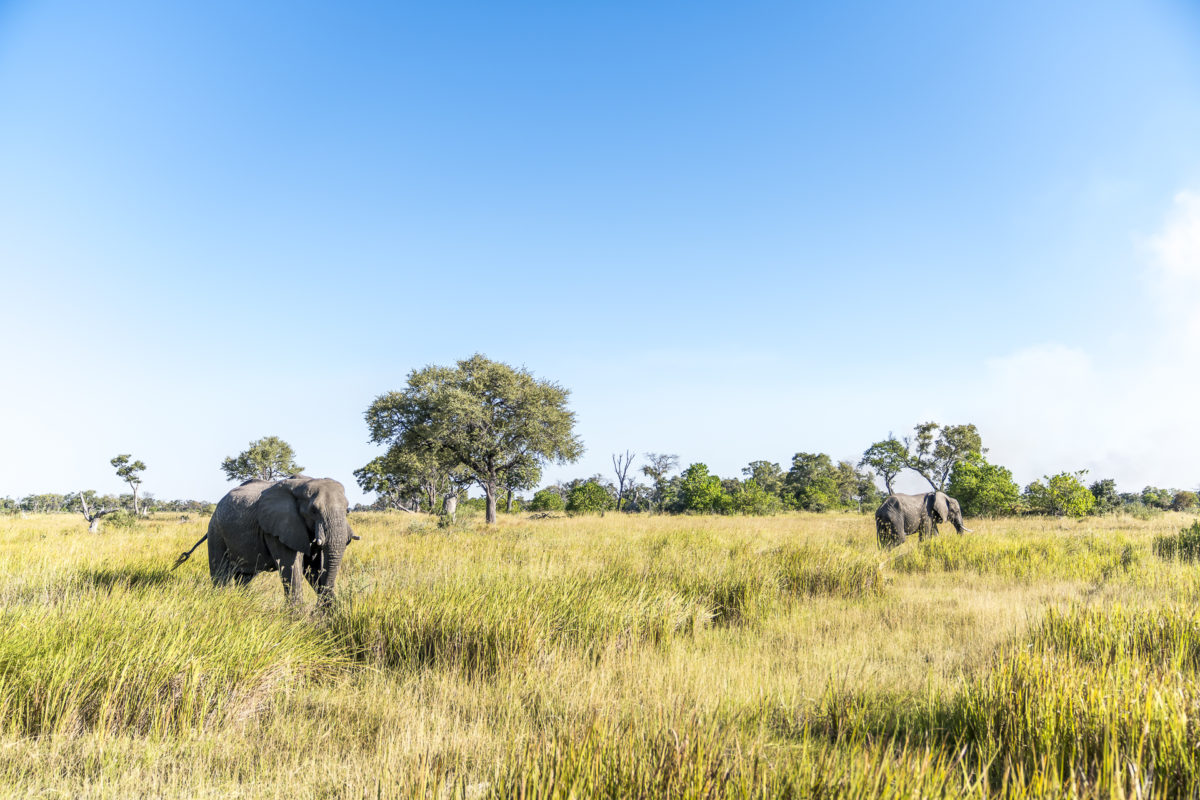
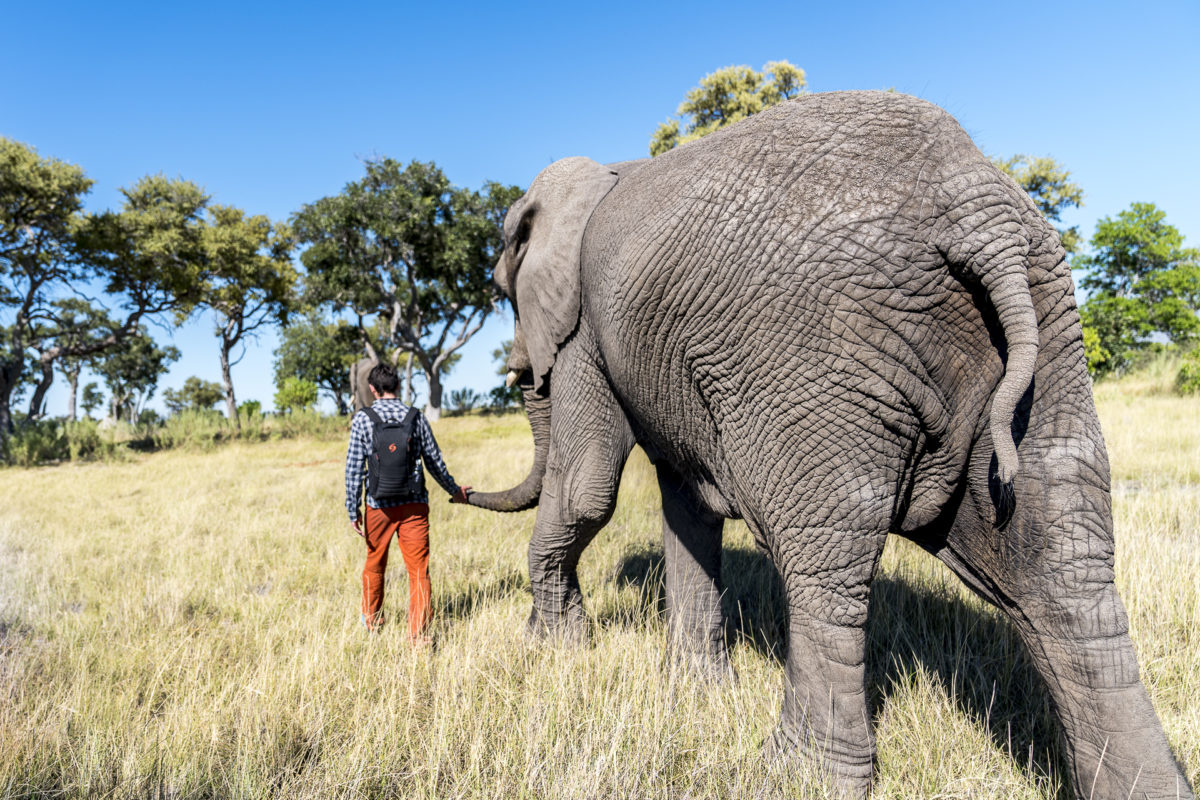
Practical Botswana Safari Tips
How much does a safari in Botswana cost?
Botswana is not a cheap country to travel to. If you don’t explore the country as a self-drive with a roof tent, but like us in lodges with all-inclusive services, you have to expect a basic budget of > 500 CHF per night and person. In Botswana it is common for the price to be included in addition to the overnight stay, the full board as well as the activities (game drives, bush walks, mokoro tour…) on site and these cannot be booked separately. The smaller and more exclusive the camp, the higher the price. The cheapest offers can be found during the rainy season (December – March).
Best time to go on safari in Botswana
For safaris in Botswana, the dry season from April to October is recommended. While we had very pleasant temperatures in May, it can cool down a lot during the nights in the African winter (June-August). Since the water only reaches the Okavango Delta with a certain delay during the rainy season, you have the best chance to explore the delta by mokoro from the end of June/beginning of July. Accordingly, however, the prices are still the highest then.
To enter Botswana, Swiss citizens need a passport that is valid for at least six months after the date of entry. No visa is required for stays of less than 90 days.
Ban on plastic bags, Numerous African countries introduced a ban on plastic bags
in 2018/2019 – including Botswana. Since last year, plastic bags have not been allowed to be imported into the country. It is best to pay attention to this detail when packing your luggage.
Money, currency, and tipping
The national currency in Botswana is the Pula. However, if you are considering an organized trip, you hardly require cash in the local currency, but take dollars with you as an alternative currency. All prices in the lodges are quoted in dollars. The lodges we visited all had a “tip box”. As a rule, the amount received there is divided among all employees. However, the guides are not considered – the tips are handed over to the guides directly at the end of the stay. As a guideline, this can be assumed to be 5 dollars per person/day.
How to get to Chobe National Park The starting point for the Chobe National Park
is Kasane in northern Botswana. Kasane is also one of the starting points for a detour to Victoria Falls. From Namibia you can reach Kasane via Katima, Mulilo and Ngoma.
How to get to the Okavango Delta The starting point for trips to the Okavango Delta
is the town of Maun. From both Maun and Kasane, round trips and feeder flights to the Okavango Delta depart. We flew in from Kasane and at the end travelled back to Johannesburg via Maun. Please note that different baggage regulations apply to flights with the small bush planes. As a rule, baggage on these flights is limited to 20 kg per person including hand luggage. In addition, no hard-shell suitcases should be carried, but ideally bags/duffle bags.
Do I need malaria prophylaxis?
The risk of malaria in Botswana varies depending on the area and the season. I recommend a consultation at a tropical institute / travel medicine center before the trip. We were prescribed Atovaquon Plus as a prophylaxis, which we took daily for a defined period of time and – fortunately – tolerated both without noticeable side effects.


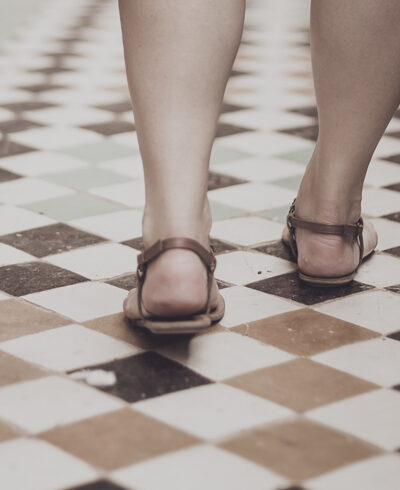
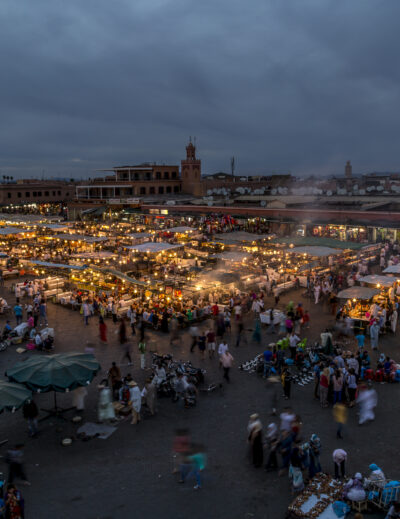
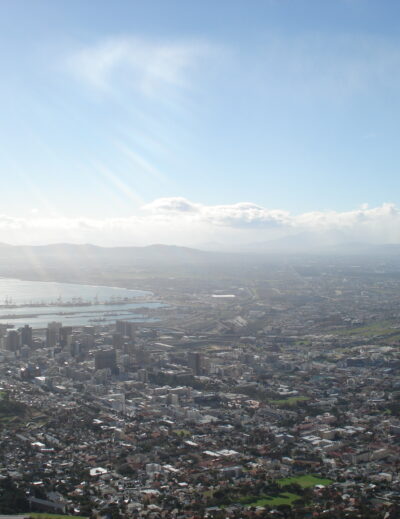
Leave a Reply